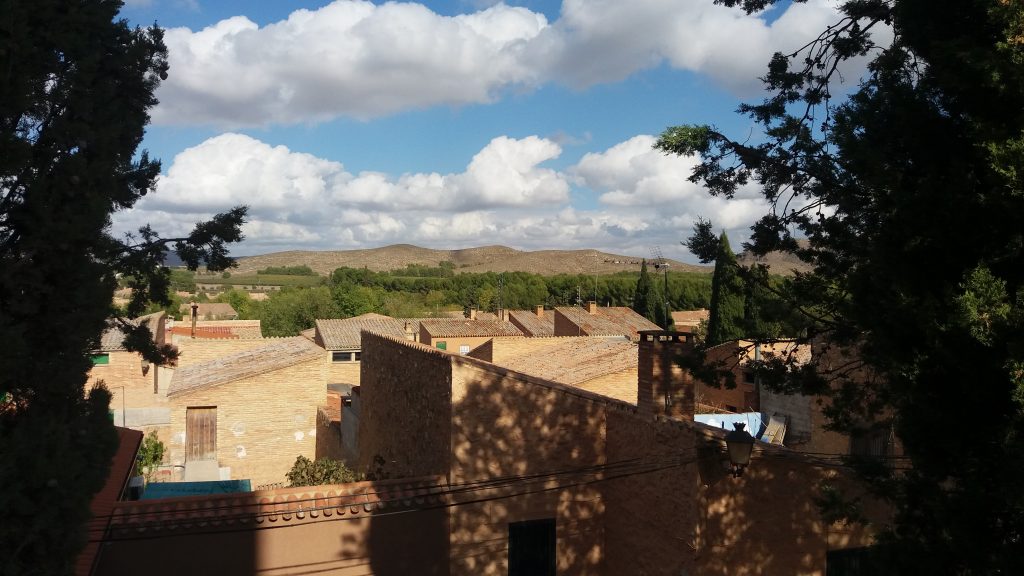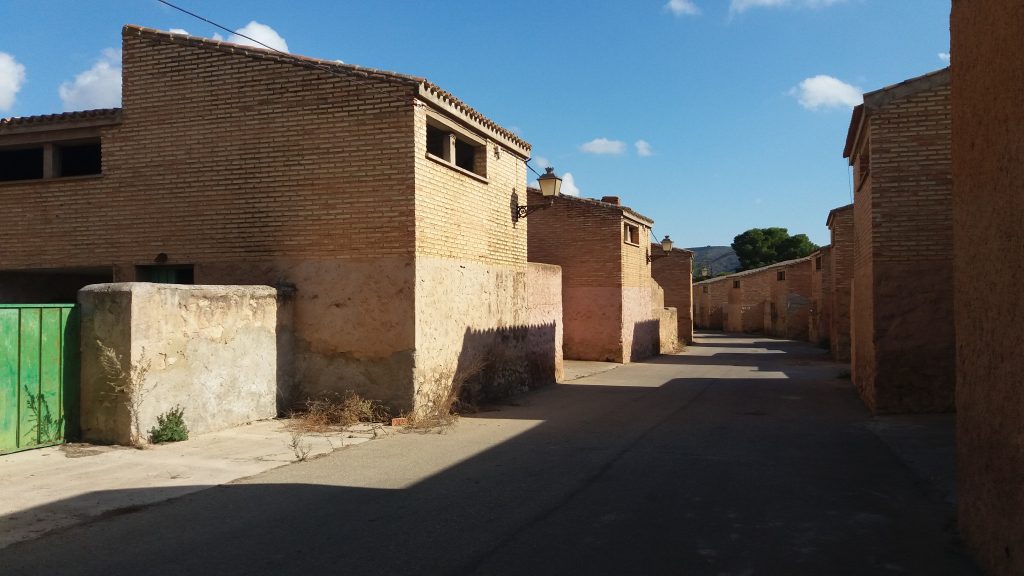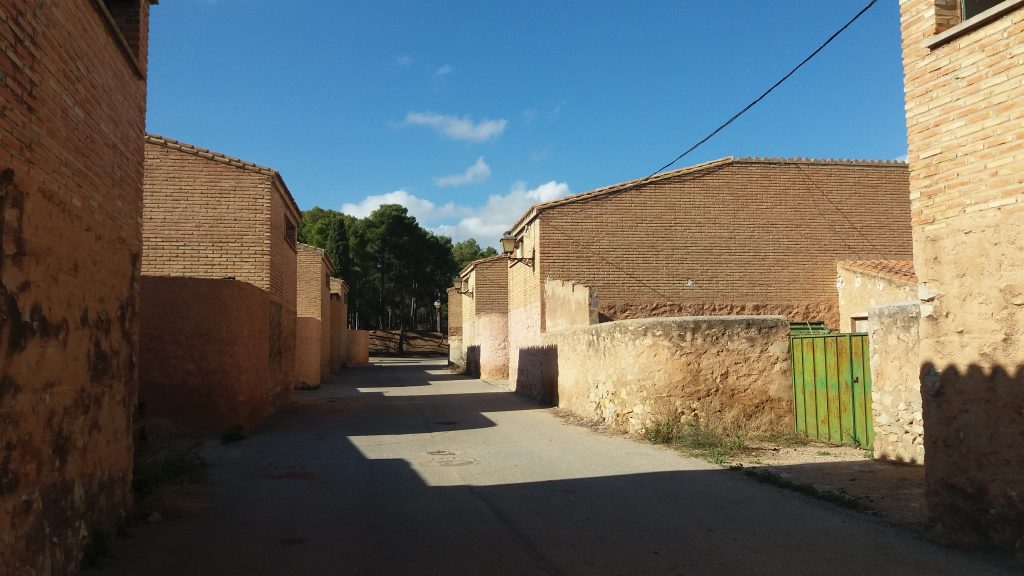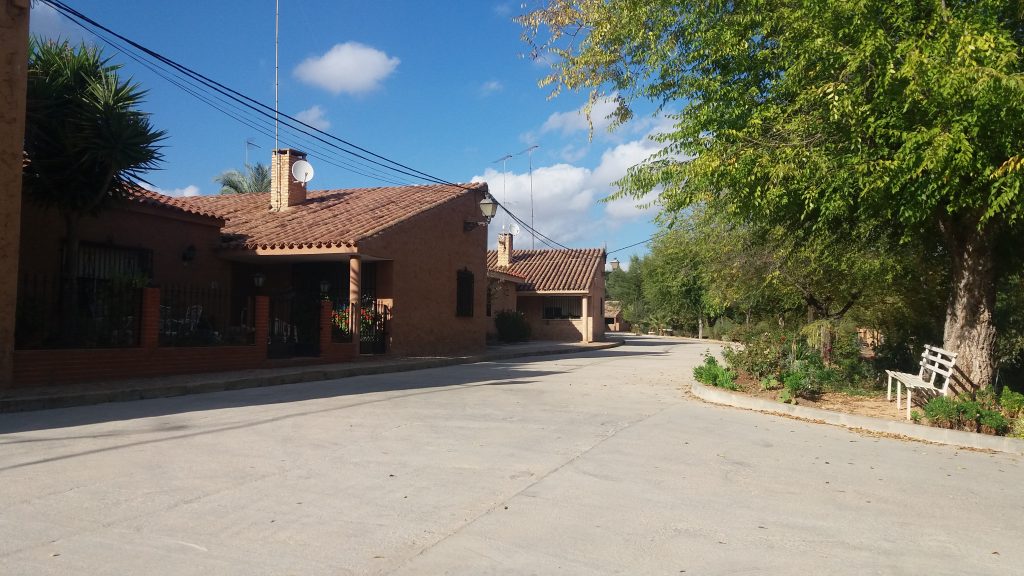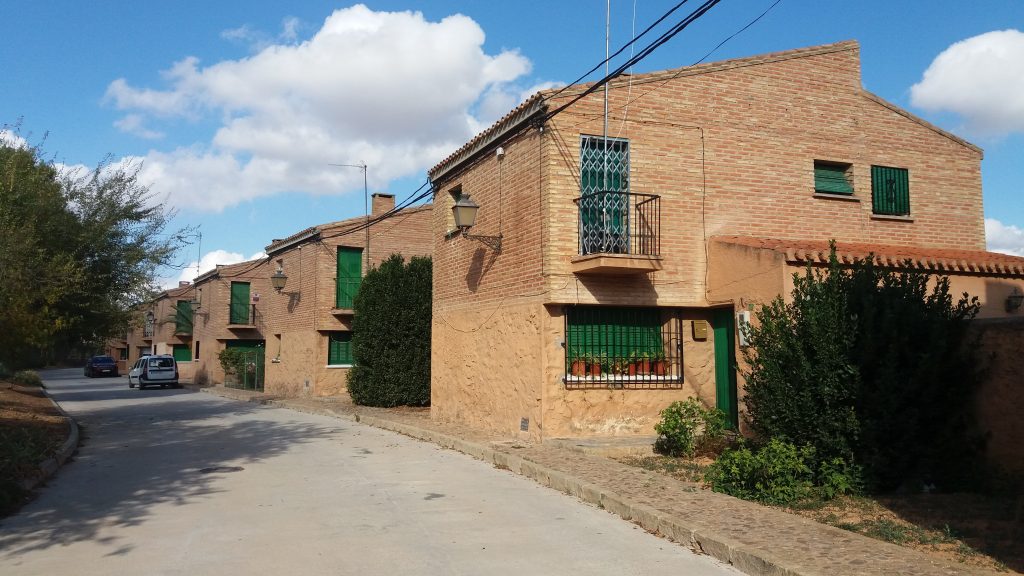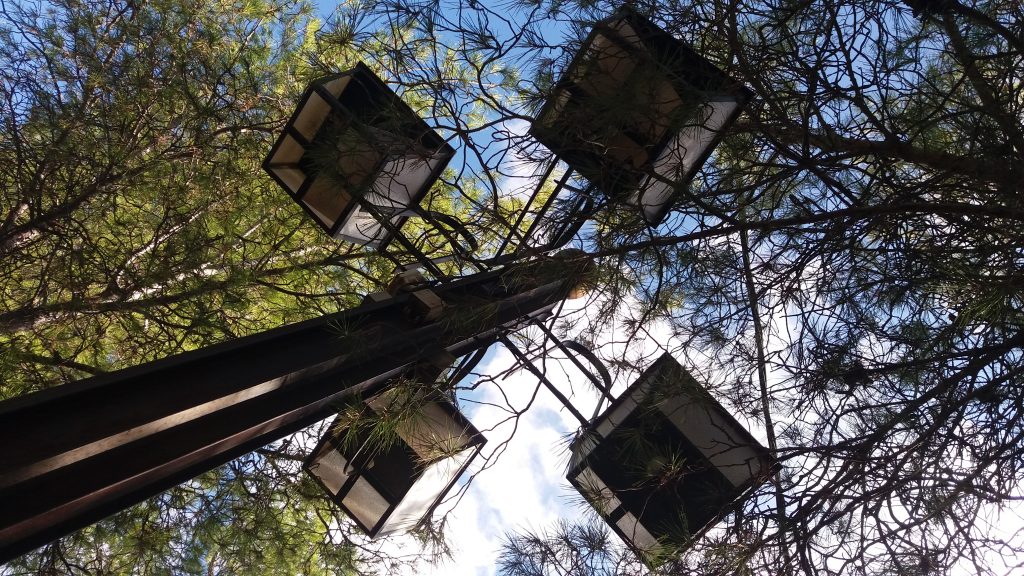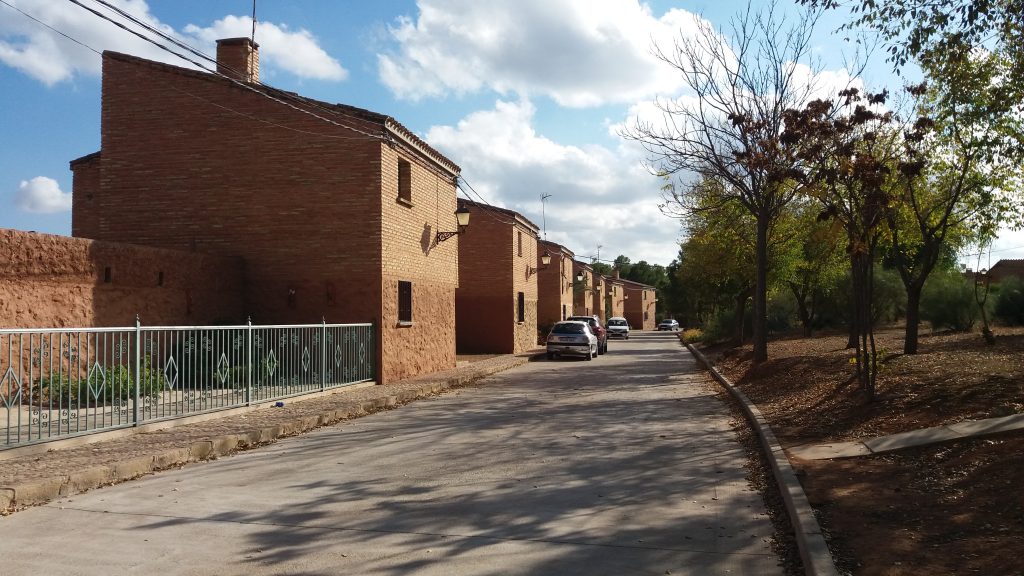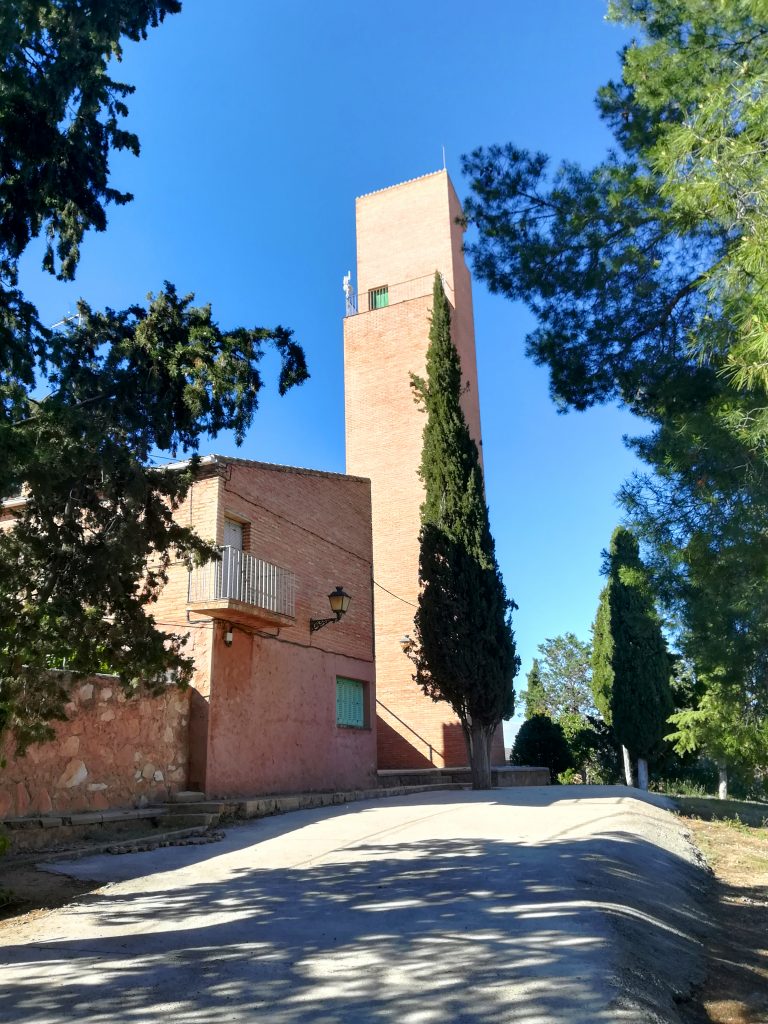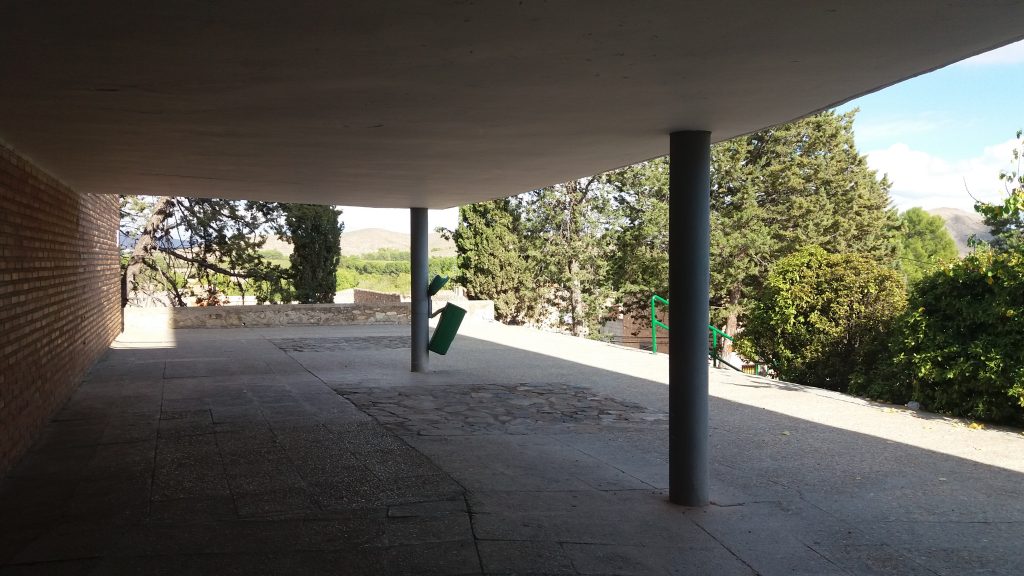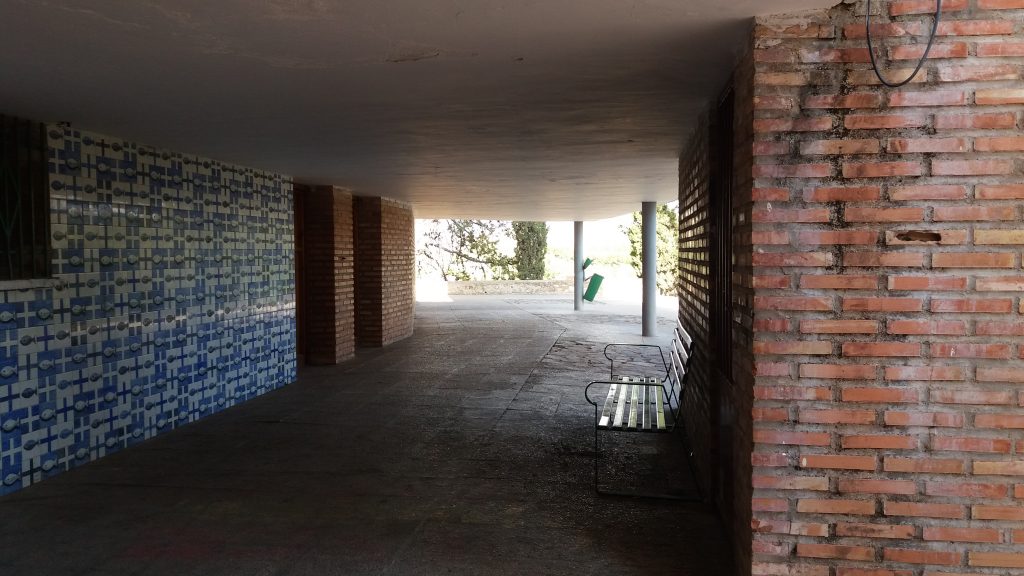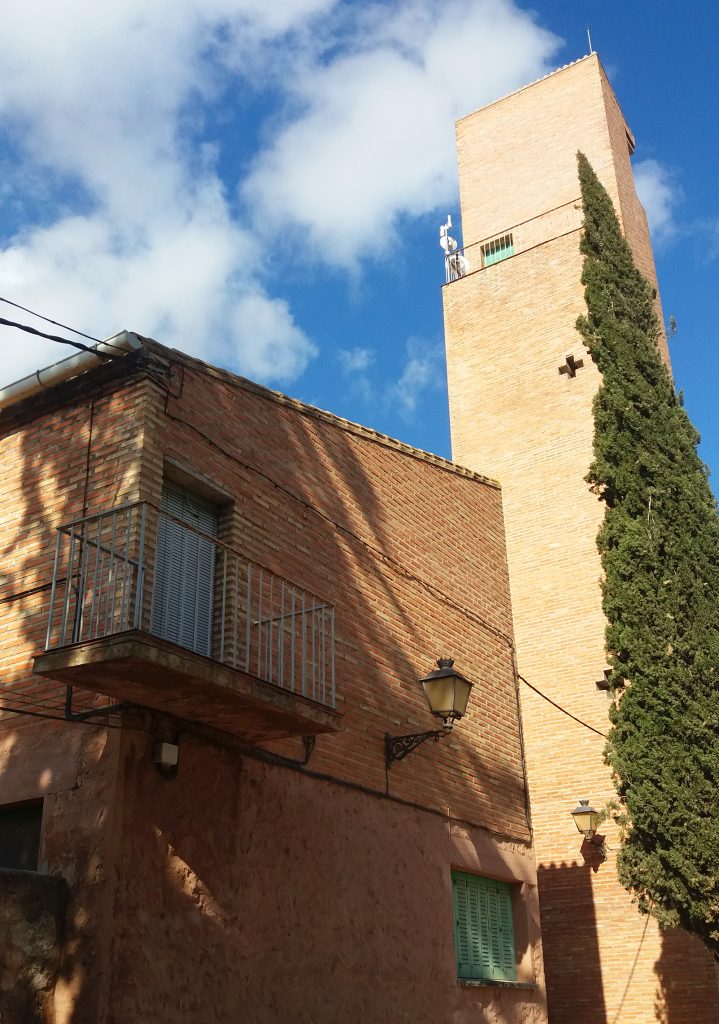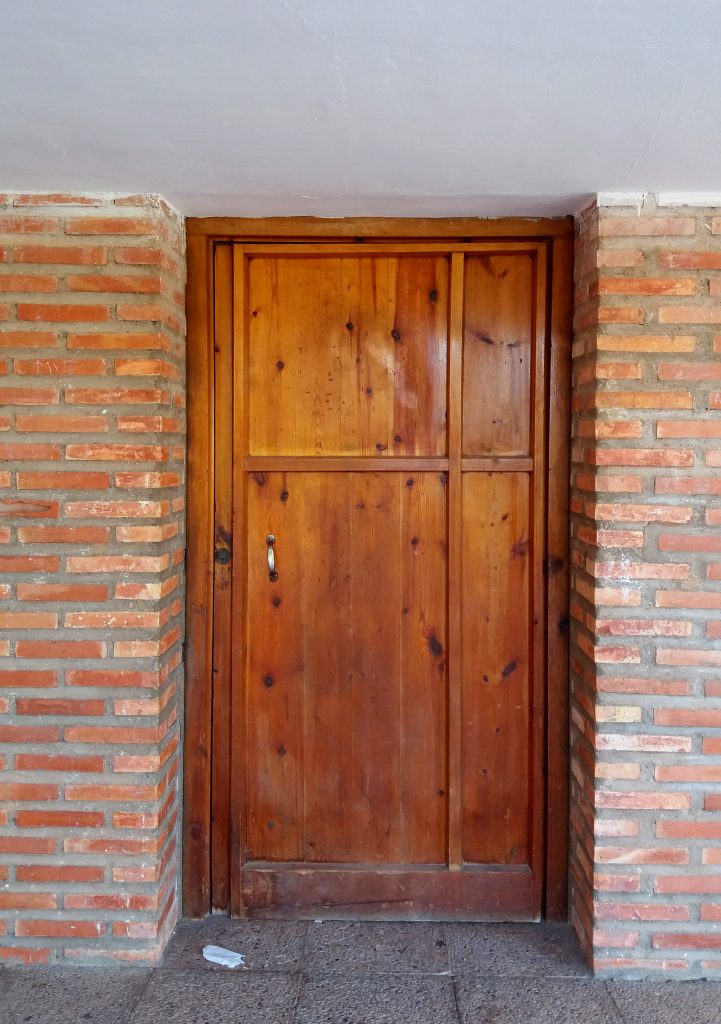This article is part of the Hidden Architecture Series “Tentative d’Épuisement”, where we explore the practice of an architectural criticism without rhetoric and based mainly on the physical experience of the work itself.
Este artículo forma parte de la serie “Tentativa de Agotamiento”, comisariada por Hidden Architecture, donde exploramos la práctica de una crítica arquitectónica ausente de retórica y fundamentada sobre todo en la experiencia física de la propia obra.
***
Every image by Hidden Architecture
Further reading on Cañada de Agra (I)
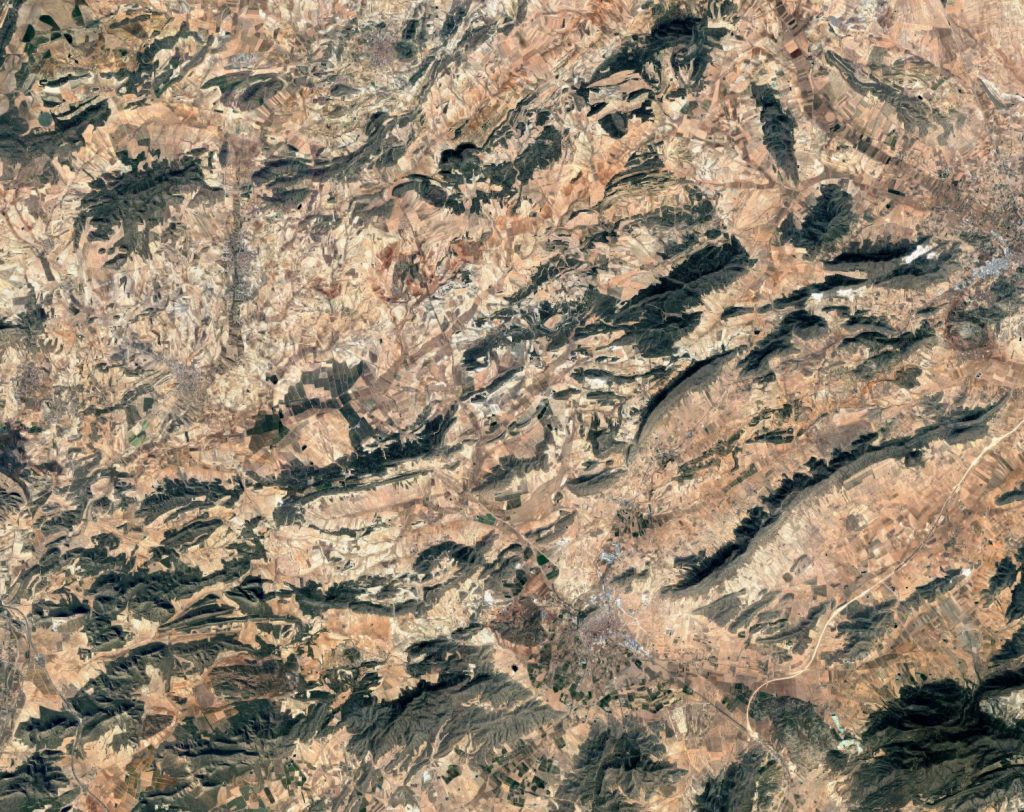
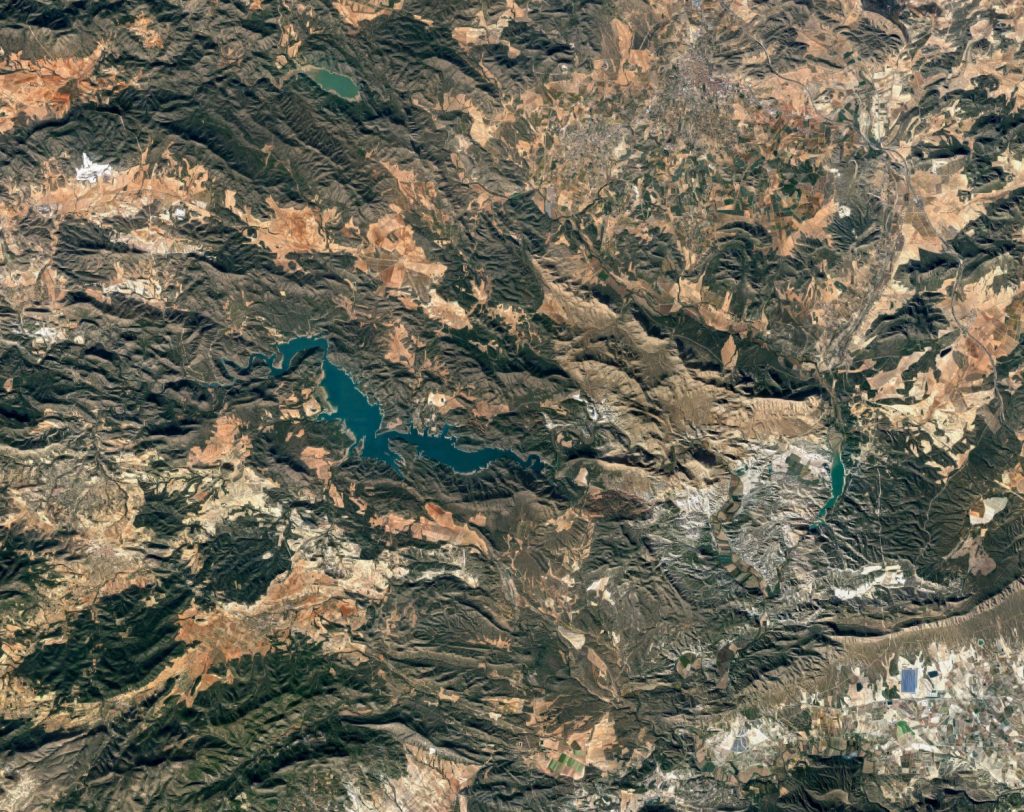
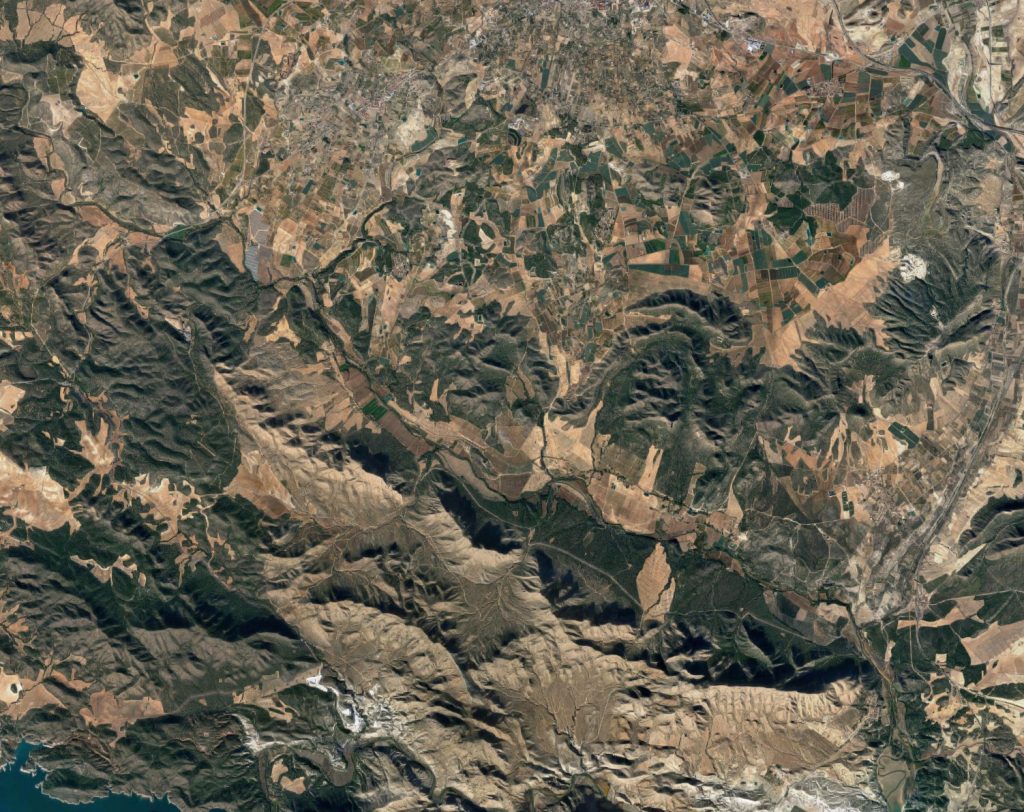
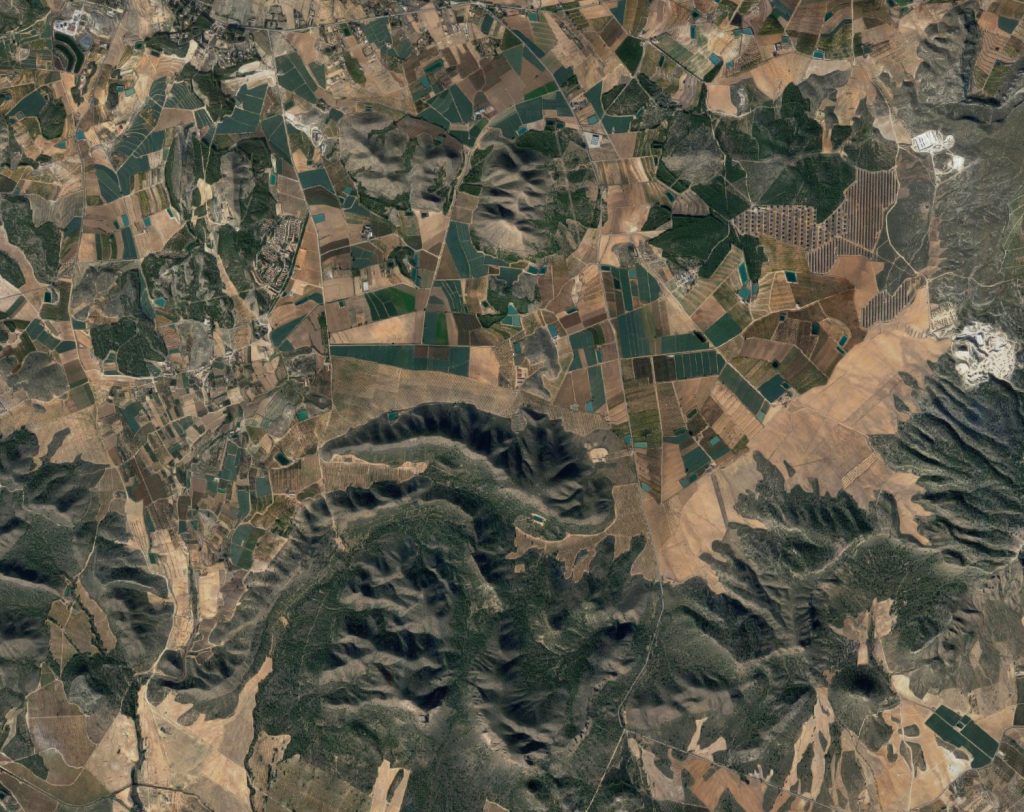
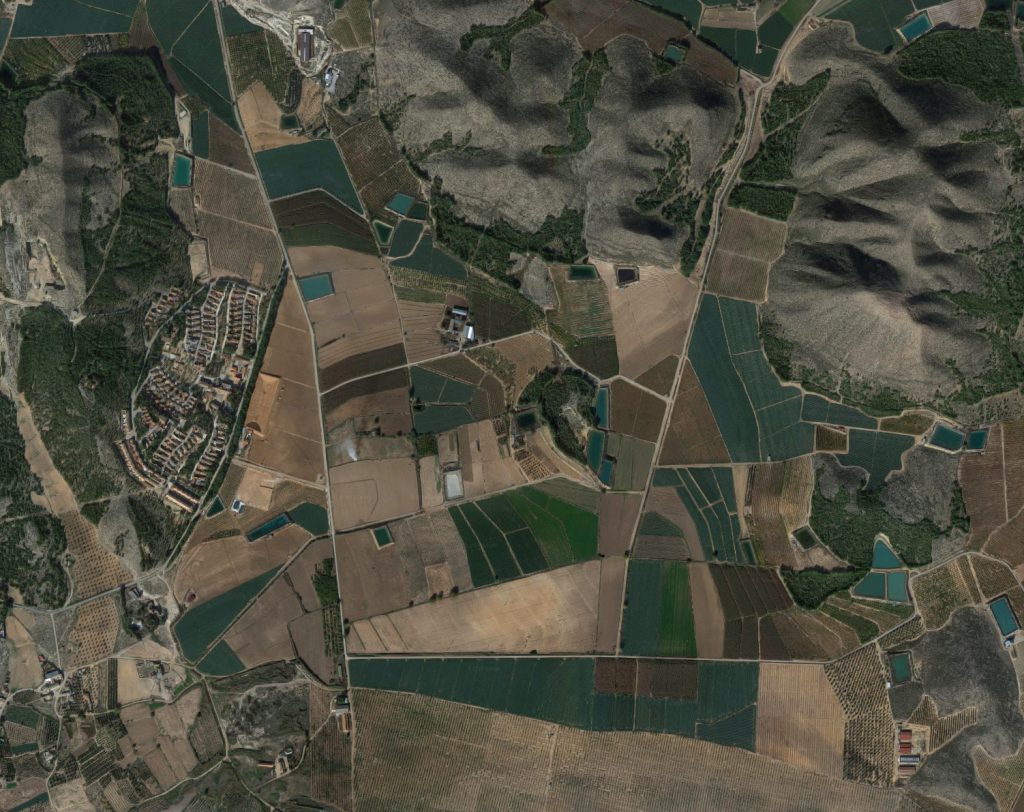
I
La Mancha. As we move southwards, gradually turning our backs to the west, the vast ochre-coloured plain that is here the Meseta gives way to rock formations with a sharp outline. Barren lands, once infinite wheat fields, say goodbye to receive fields of olive trees planted in nets. Climbing lightly, smaller in size and elongated in shape, other olive trees, freed from their productive duty, appear from steep edges. The vertical sun reveals a soil of extraordinary hardness. A harshness mitigated at intervals by patches of green, sprouting from underground water sources. Small oases of refuge in these lands always beaten by the wind. Giants with outstretched arms, some of them still quixotic, the younger ones wearing anodised suits, agitatedly bid us farewell, warning us that the mountains that rise up there hide the blue of the sea.
La Mancha. A medida que nos desplazamos en dirección sur, virando poco a poco nuestra espalda a poniente, la extensa planicie de color ocre que es aquí la Meseta deja espacio a formaciones rocosas de afilado perfil. Tierras yermas, en otro tiempo infinitos trigales, se despiden para recibir campos de olivos plantados en malla. Trepando ligeros, talla menor y alargada figura, otros olivos liberados de su productivo deber se asoman desde escarpadas aristas. El sol vertical revela una tierra de extraordinaria dureza. Una dureza mitigada a intervalos por manchas verdes, brotadas al amparo de fuentes de agua subterránea. Pequeños oasis de refugio en estas tierras siempre batidas por el viento. Gigantes de brazos extendidos, quijotescos todavía algunos, los más jóvenes luciendo traje anodizado, nos despiden con agitación dando aviso: las montañas que allí se levantan esconden el azul del mar.
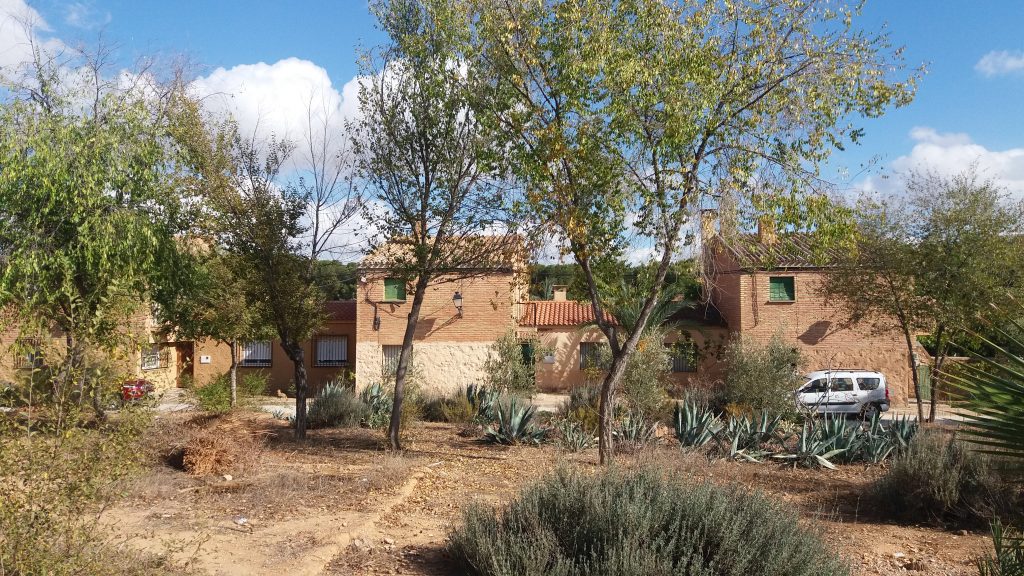
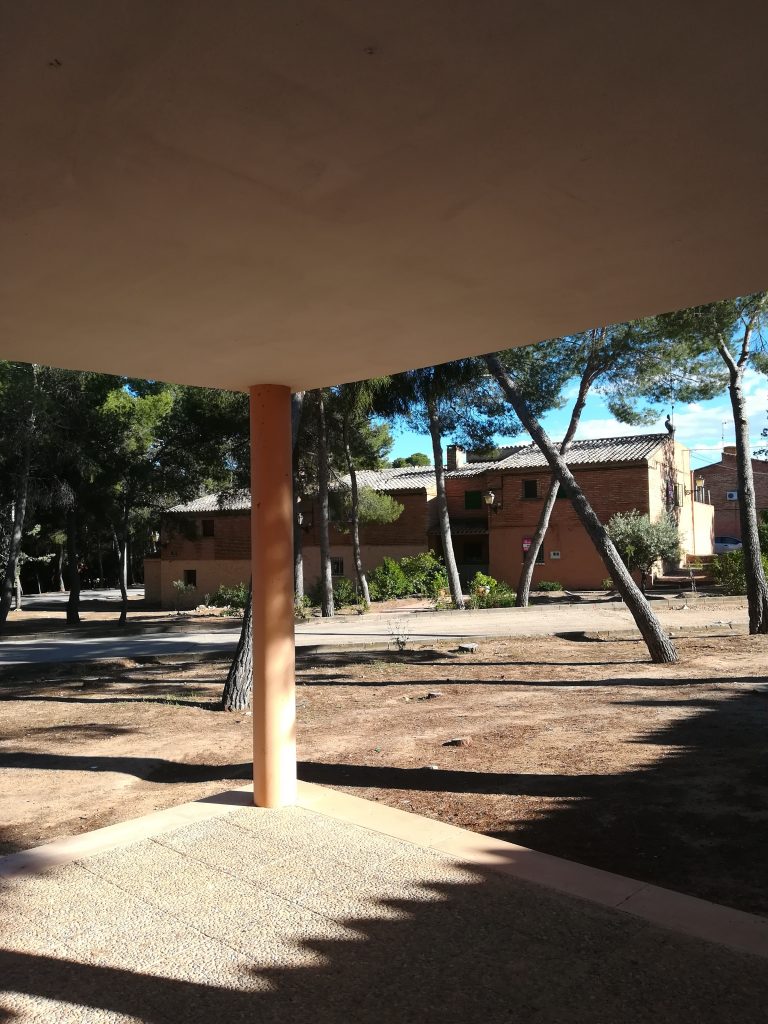
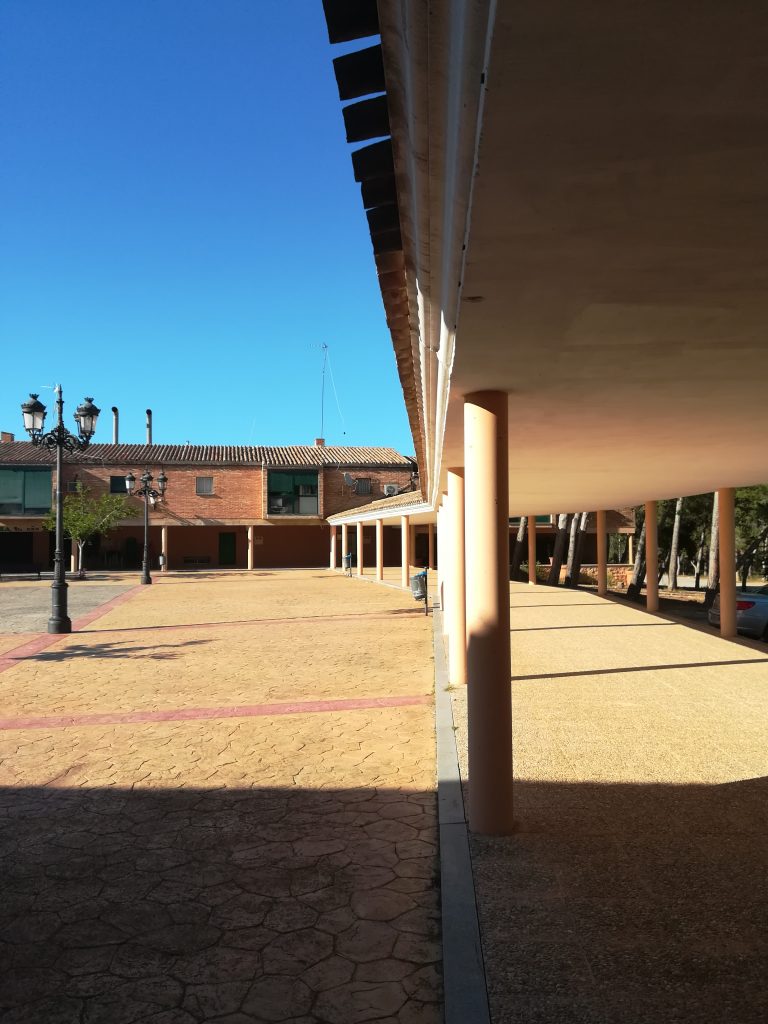
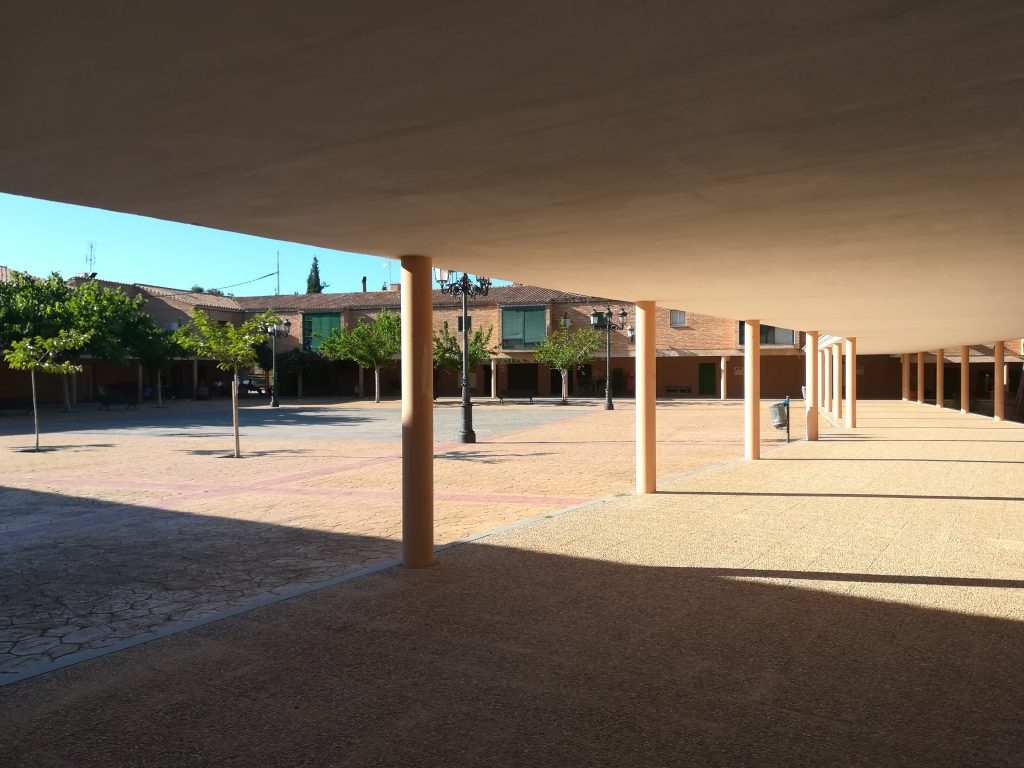
III
As we roll down the window, a deep smell of freshly watered earth fills the passenger compartment of the car. We leave the motorway and head west as we unveil a landscape quite different from the one that has accompanied us until now. Rows of mountains are blurred in this light of a somewhat anticipated sunset. Driving along a narrow, deserted country road, we have the impression of entering one of those green patches that, like mirages, we have been leaving behind us on our way. With the ochre almost extinct, fruit trees spread out to the left and right. A pair of swallows flutter and perform a pirouette with joyful virtuosity in front of us, to land a little later on an electric pole. On the left hand side, an old path descends. In front of us, pines and poplars stand hand in hand in their maturity. We wander along the last few metres of the path until we stop in front of a staircase that leads, a few seconds further up, to a portico that looks out over the treetops from its elevated position. You are welcome.
Al bajar la ventanilla, un profundo olor a tierra recién regada inunda el habitáculo del automóvil. Abandonamos la autopista rumbo a Oeste mientras desvelamos un paisaje bien distinto de aquel que hasta ahora nos acompañó. Hileras de montañas se difuminan con esta luz de ocaso algo anticipado. Avanzando por una estrecha y desierta carretera rural, tenemos la impresión de adentrarnos en una de aquellas manchas verdes que, a modo de espejismos, fuimos dejando atrás en nuestro camino. Con los ocres casi extintos, árboles frutales se extienden a izquierda y derecha. Una pareja de golondrinas revolotea y ejecuta una pirueta con alegre virtuosismo frente a nosotros, para posarse poco después sobre un poste eléctrico. A mano izquierda desciende una antigua vereda. Al frente, pinos y álamos se yerguen dándose la mano en su madurez. Divagamos por los últimos metros de camino hasta detenernos frente a una escalinata que conduce, unos segundos de ascenso más arriba, a un pórtico que otea desde su posición elevada sobre las copas de los árboles. Sed bienvenidos.
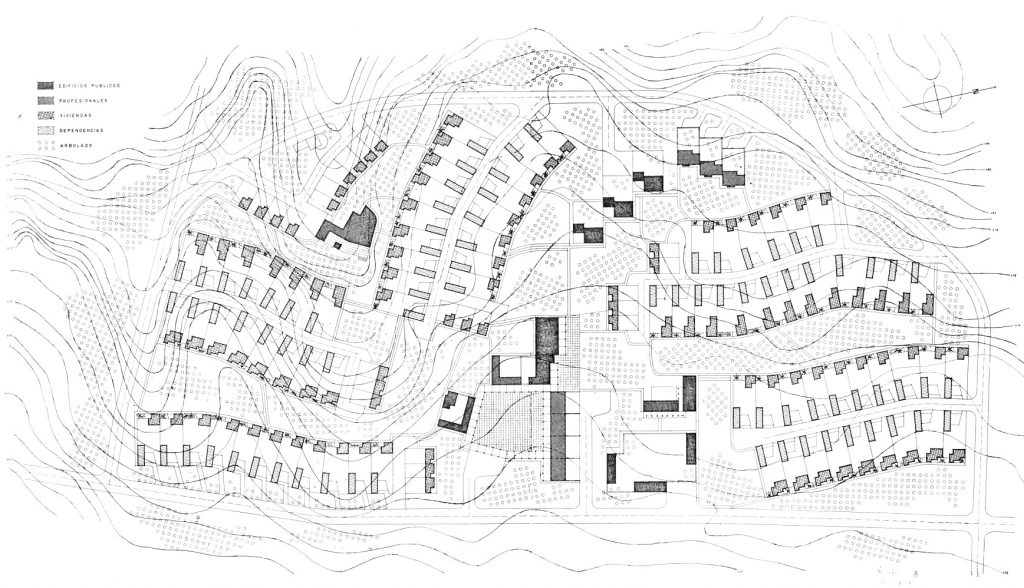

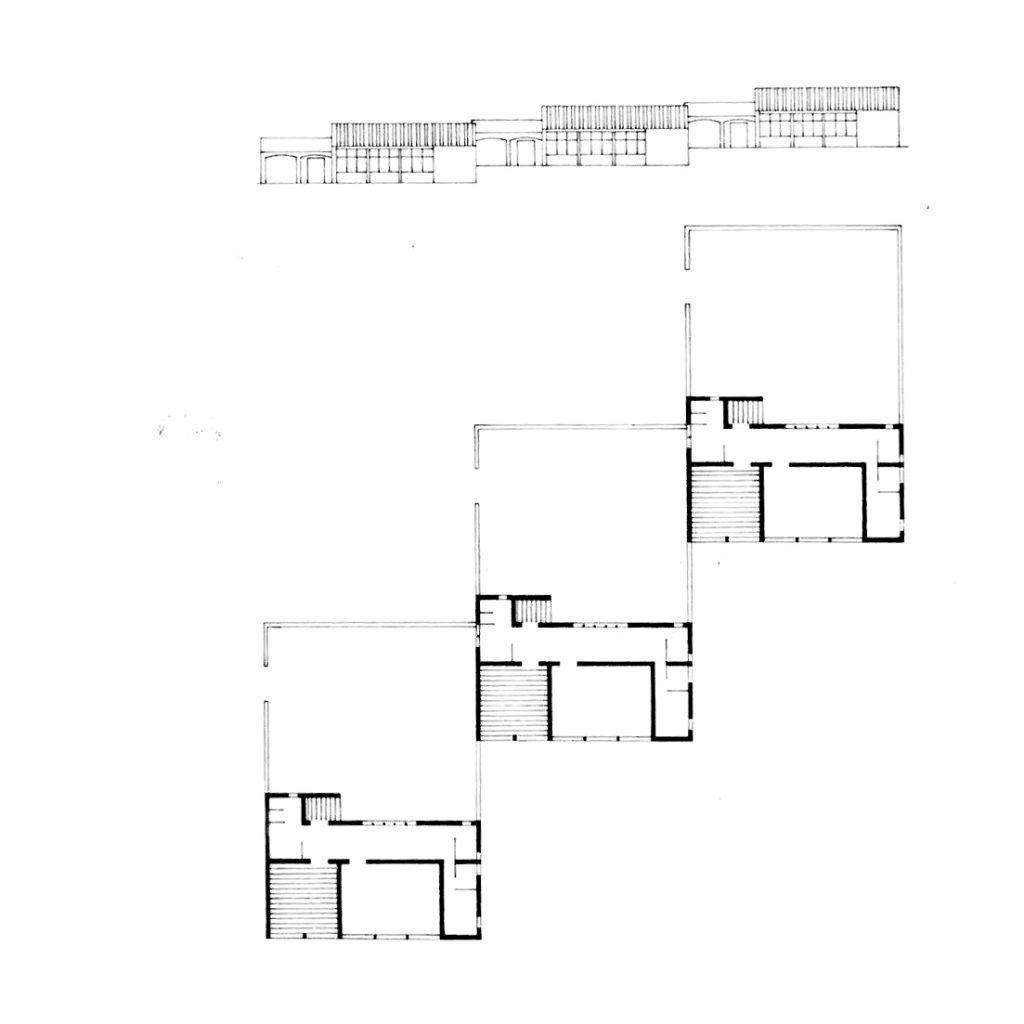
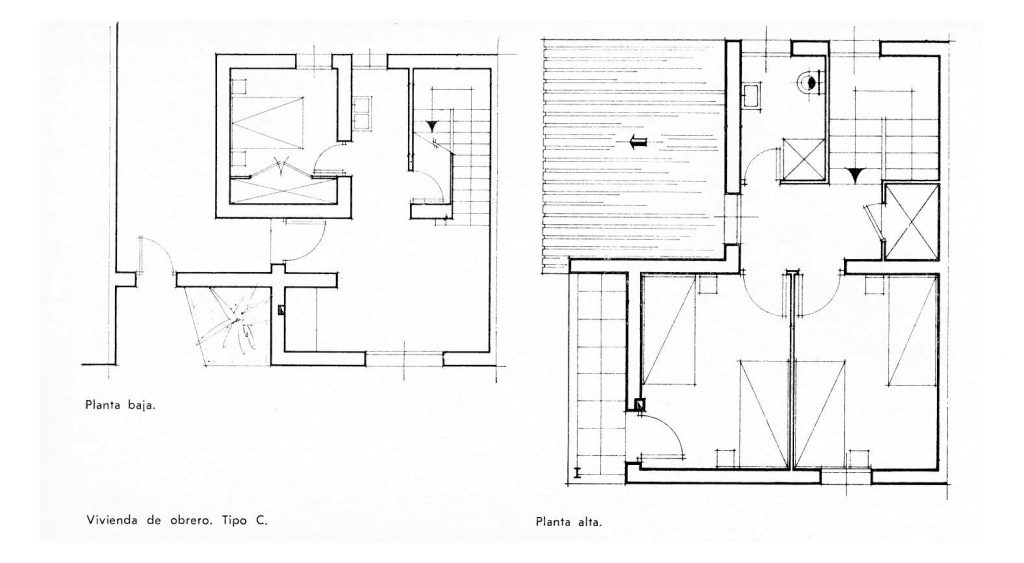
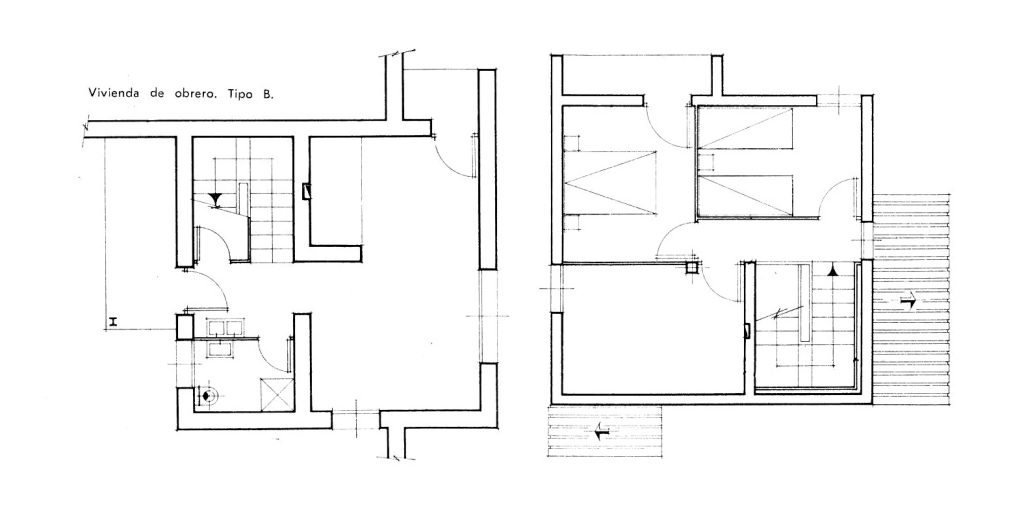


V
An already lowering sun casts a much more horizontal amber light. The circular pillars of the portico that welcomes us build against the light an open space that nevertheless possesses a certain quality of containment. We climb the steps and there it is, the town’s main square. Custom has it that main squares are usually located in the geometric centre of settlements, as they have grown up around them over time. Designing a settlement from scratch has this advantage: each of the elements can be placed on the territory in the most appropriate place for its nature. Here, the arcaded square of Cañada de Agra is placed at one end, and welcomes the neighbour and stranger from an elevated position; evoking in its simplicity a reddish Acropolis. We walk through the open bay of this square, fixing our gaze on the horizon filtered through the trees stretching out in front of us. A child kicks a ball against the wall of the town hall. Behind us, a group of neighbours are enjoying the afternoon chatting over coffee. The village pub is bustling with activity on the section of portico that has been allocated to it. The three brick façades that, together with the portico that opens onto the landscape, delimit this collective space, are elaborately neat. Most of the windows still have their original frames and shutters. However, there are also small modifications that the inhabitants of Cañada de Agra have gradually introduced. Some of the grilles have been renovated, introducing filigree in this square of a strong and noble character. A bougainvillea, which has grown from one of these new grilles to the level of the first floor, caresses the tiles of the eaves with its sweetness. The buzzing of bees mingles with the discussions of the chatters, enveloping these last hours of a May evening in a heady scent of summer.
I’ll have two cortados, please.
Un sol ya en descenso proyecta una luz ámbar mucho más horizontal. Los pilares de sección circular del pórtico que nos acoge construyen a contraluz un espacio abierto que, sin embargo, posee una cierta cualidad de contención. Ascendemos los escalones y ahí está, la Plaza Mayor del pueblo. La costumbre nos indica que las plazas mayores suelen ubicarse en el centro geométrico de los asentamientos, pues el crecimiento de los mismos se produjo en torno a ellas a lo largo del tiempo. Proyectar un poblado de cero presenta esta ventaja: cada uno de los elementos pueden colocarse sobre el territorio en el lugar más adecuado para su naturaleza. Aquí, la plaza porticada de Cañada de Agra se coloca en un extremo, y da la bienvenida al vecino y forastero desde una posición elevada; evocando desde su sencillez a una rojiza Acrópolis. Caminamos por la crujía abierta de esta plaza, fijando nuestra mirada en el horizonte filtrado a través de los árboles que se extienden frente a nosotros. Un niño patea un balón contra la pared del ayuntamiento. A nuestra espalda, un grupo de vecinos apura la tarde charlando en torno a un café. El bar del pueblo carga de actividad el tramo de pórtico que le ha correspondido. Las tres fachadas de ladrillo que, junto con el pórtico que abierto mira al paisaje, delimitan este espacio colectivo lucen una elaborada pulcritud. La mayoría de las ventanas conservan aún las carpinterías y contraventanas originales. Hay también, sin embargo, pequeñas modificaciones que los habitantes de Cañada de Agra han introducido paulatinamente. Algunas rejerías se han renovado, introduciendo filigranas en esta plaza de carácter recio y noble. Una buganvilla, que desde una de estas nuevas rejas ha crecido hasta el nivel del primer piso, acaricia las tejas del alero con su dulzor. El zumbido de abejas se mezcla con las discusiones de los tertulianos, envolviendo estas últimas horas de un atardecer de mayo en un embriagador aroma a verano.
Me pone dos cortados, por favor.
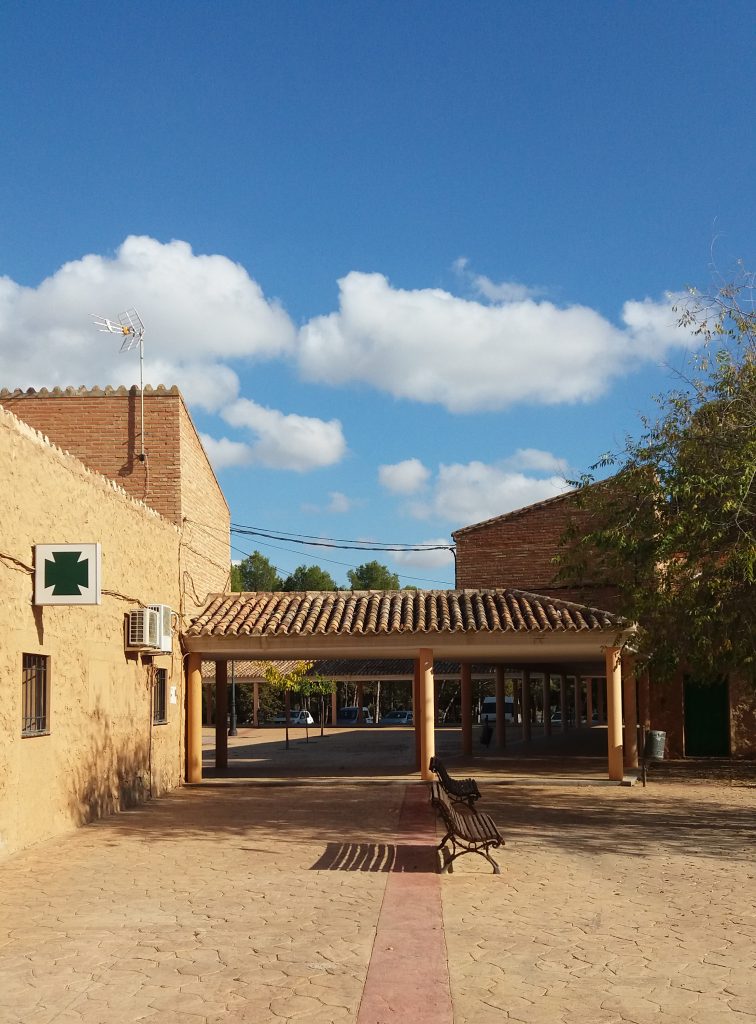
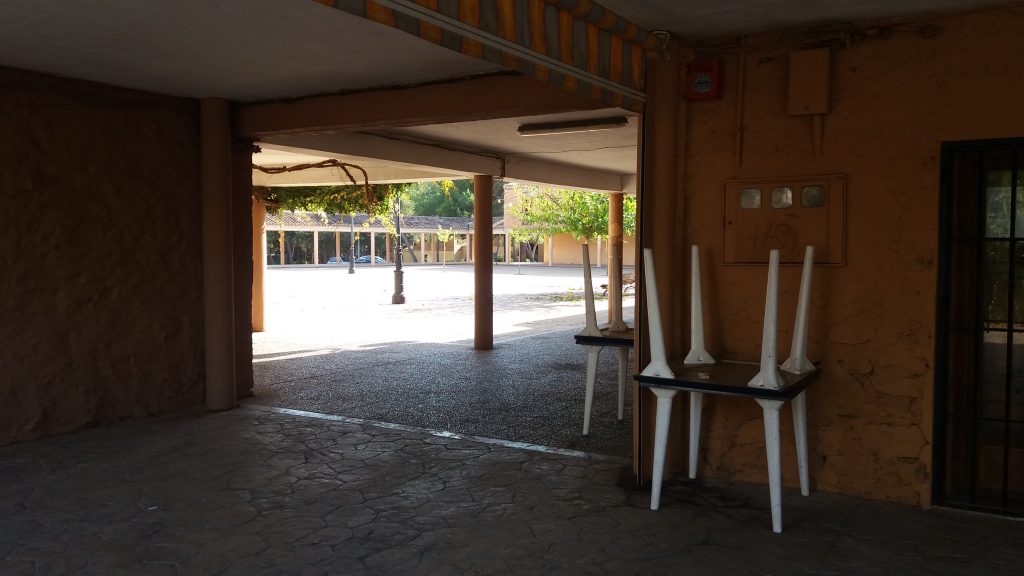


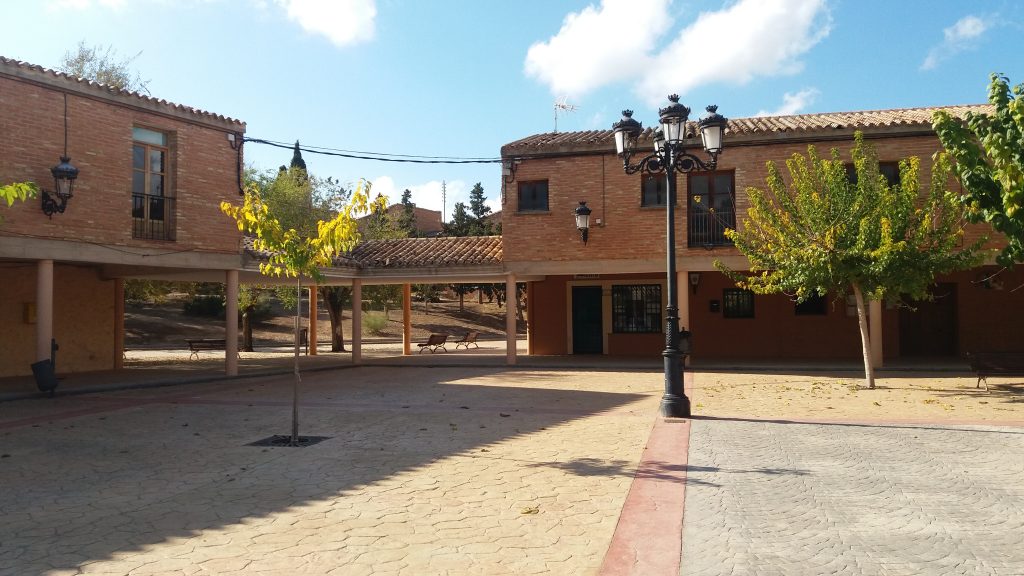
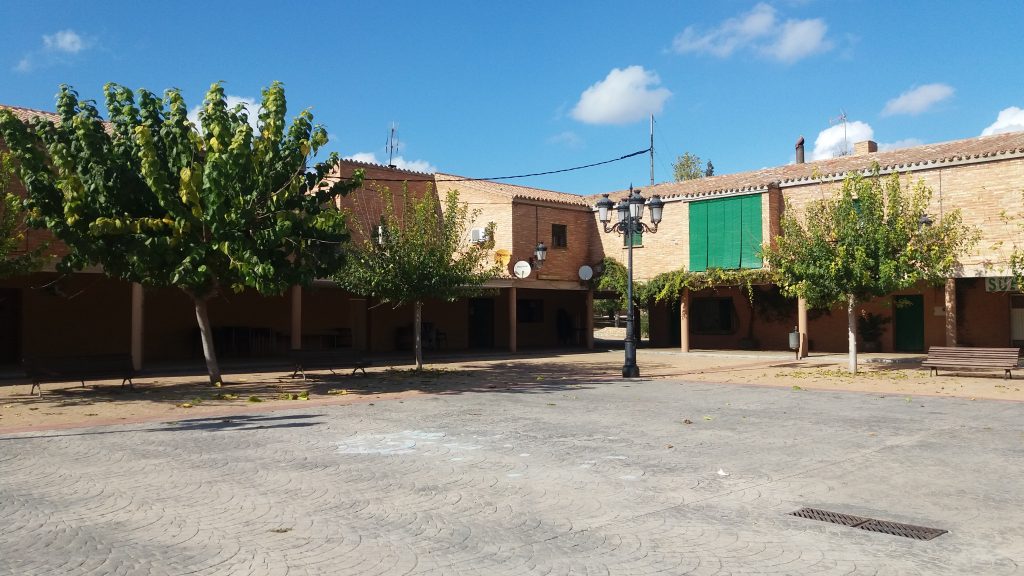
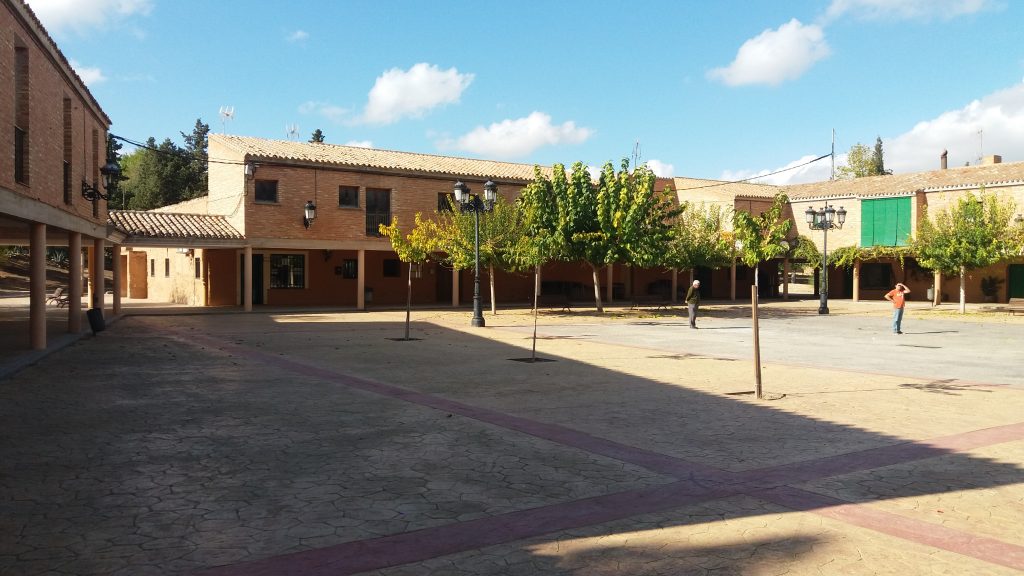
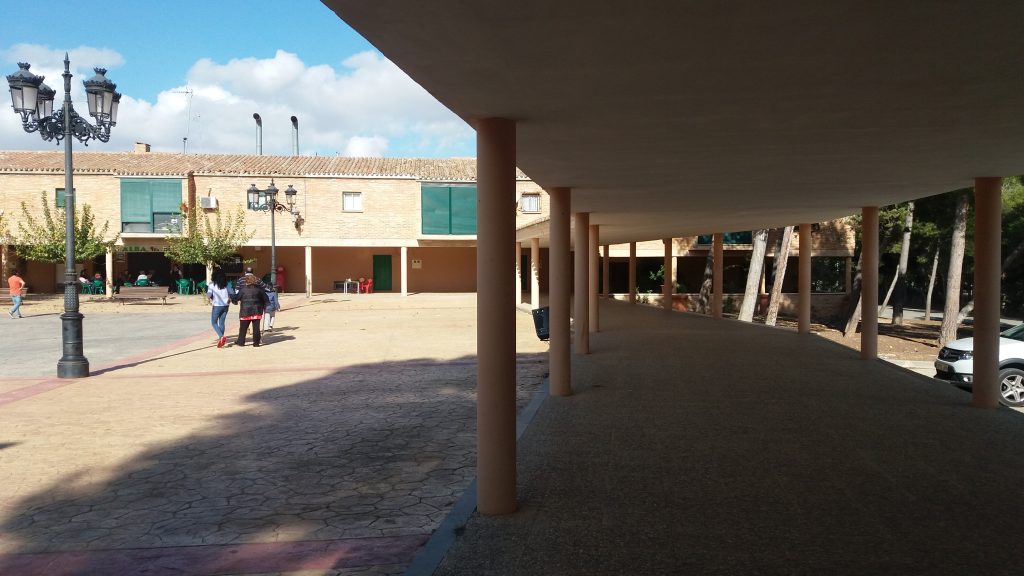
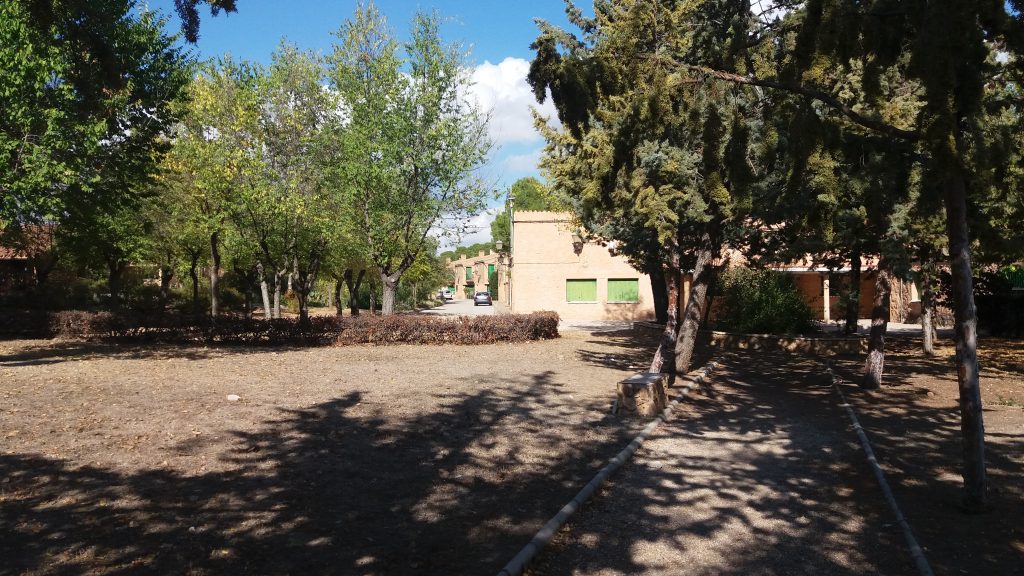
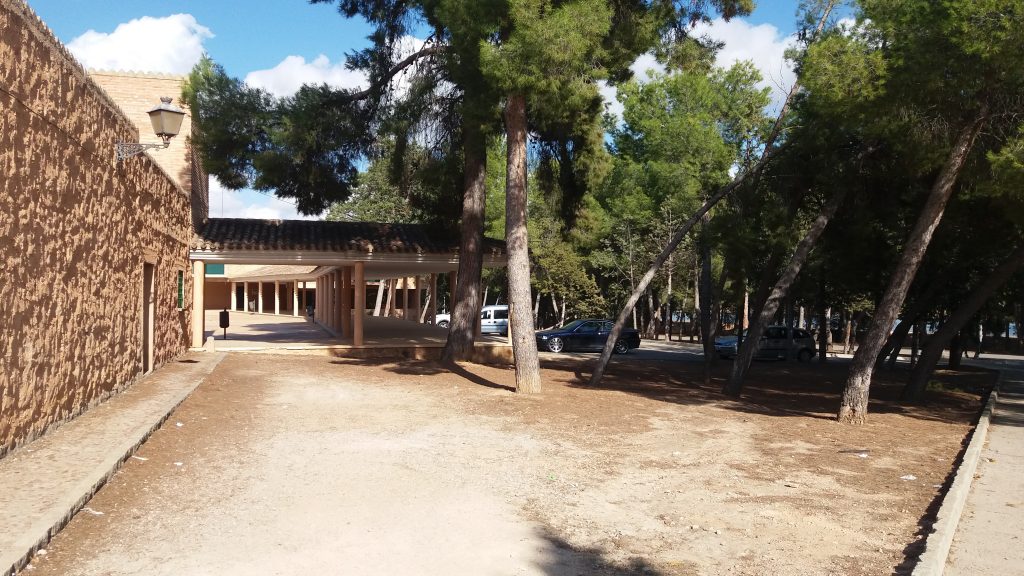
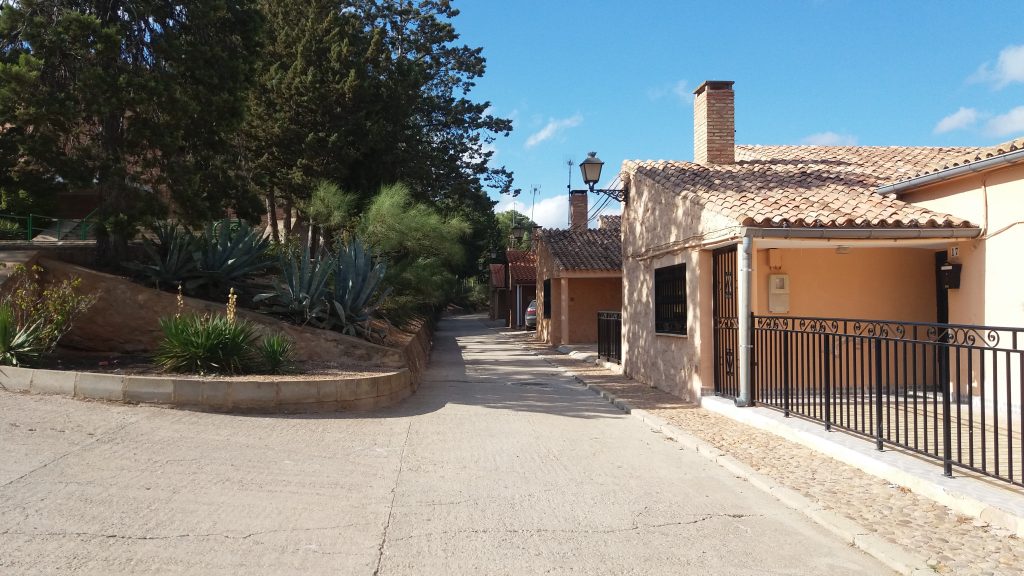
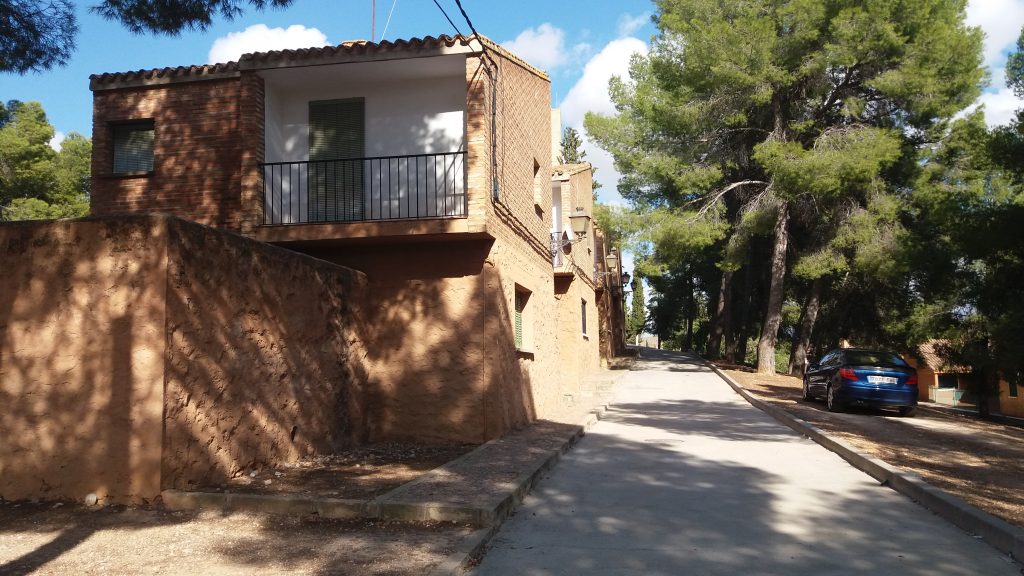

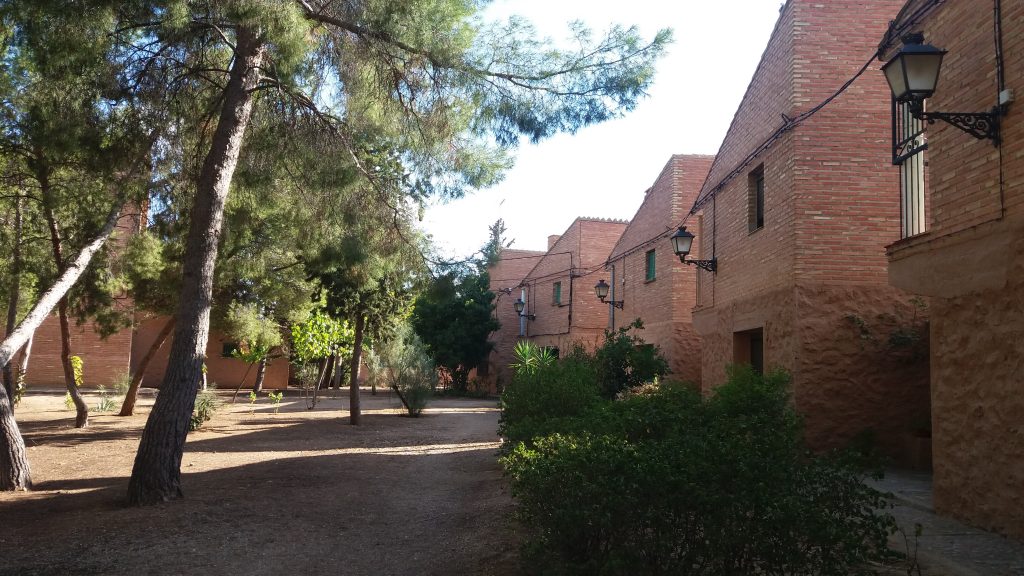
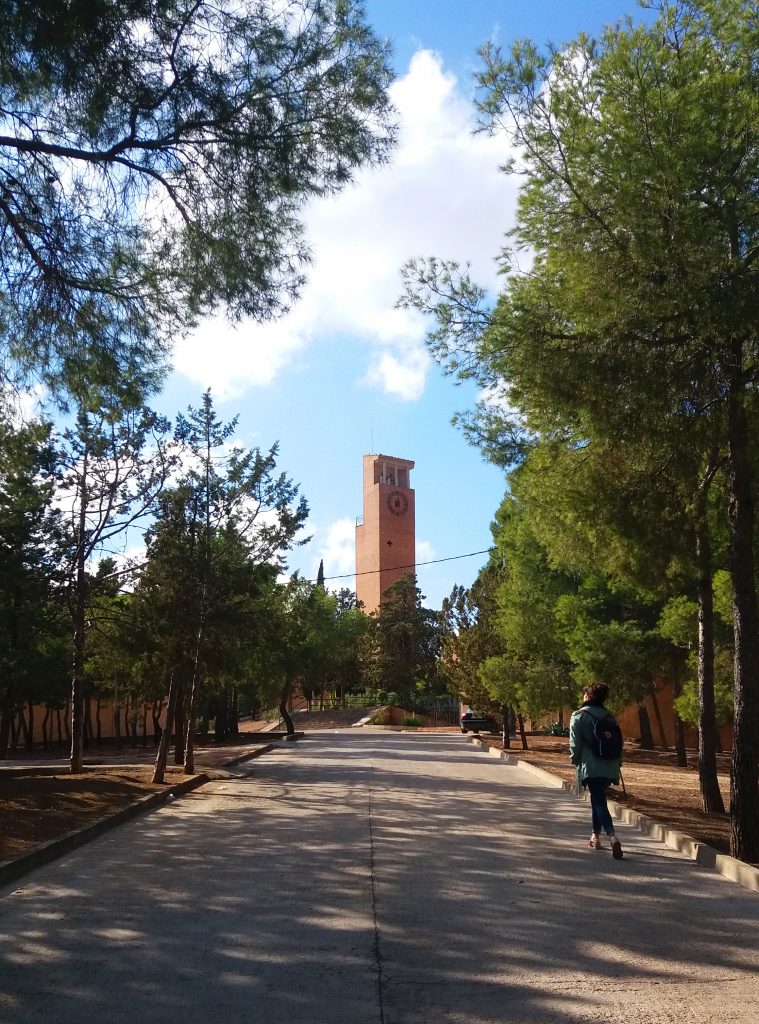
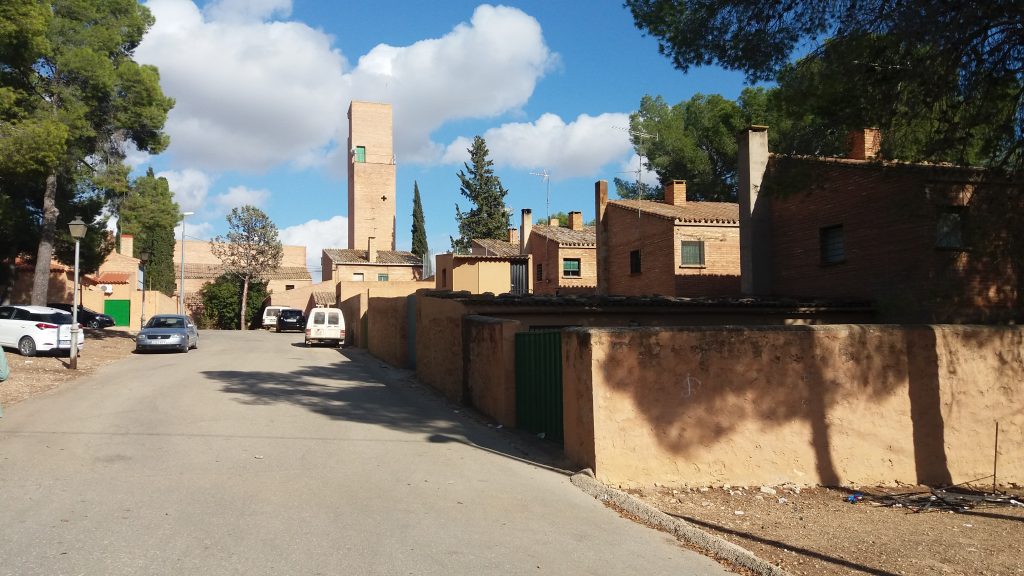
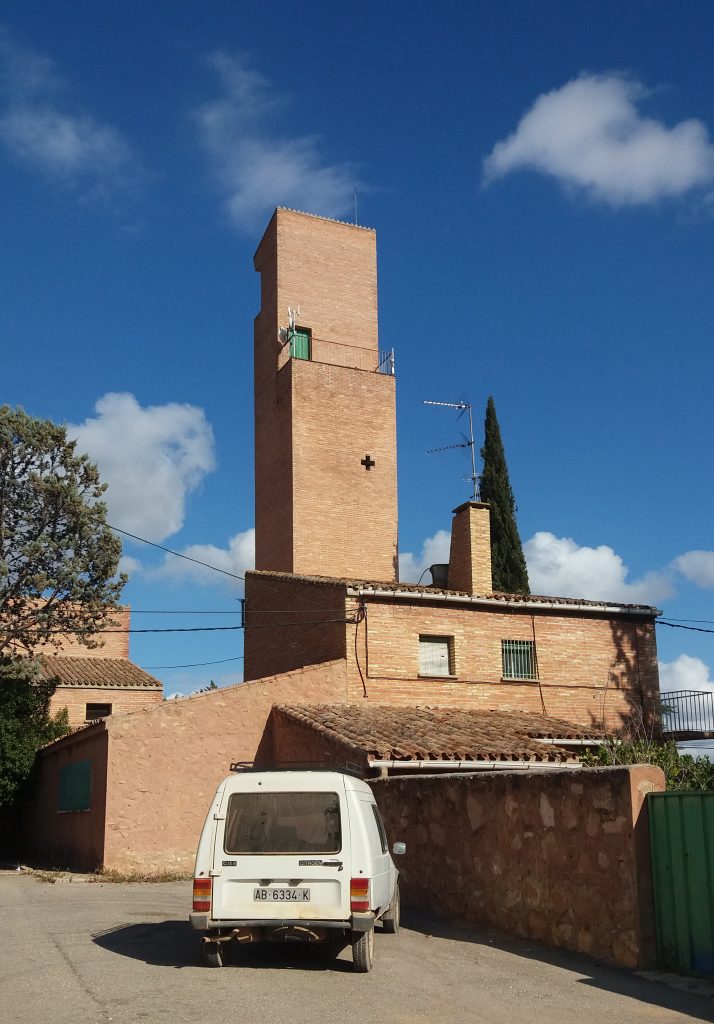
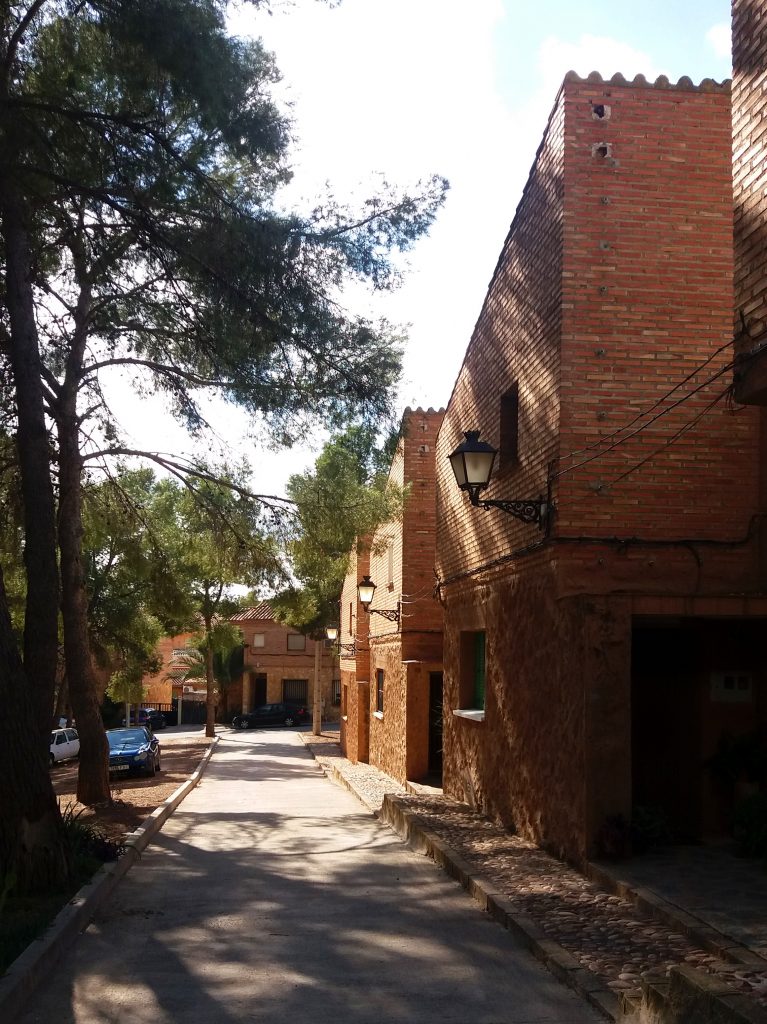
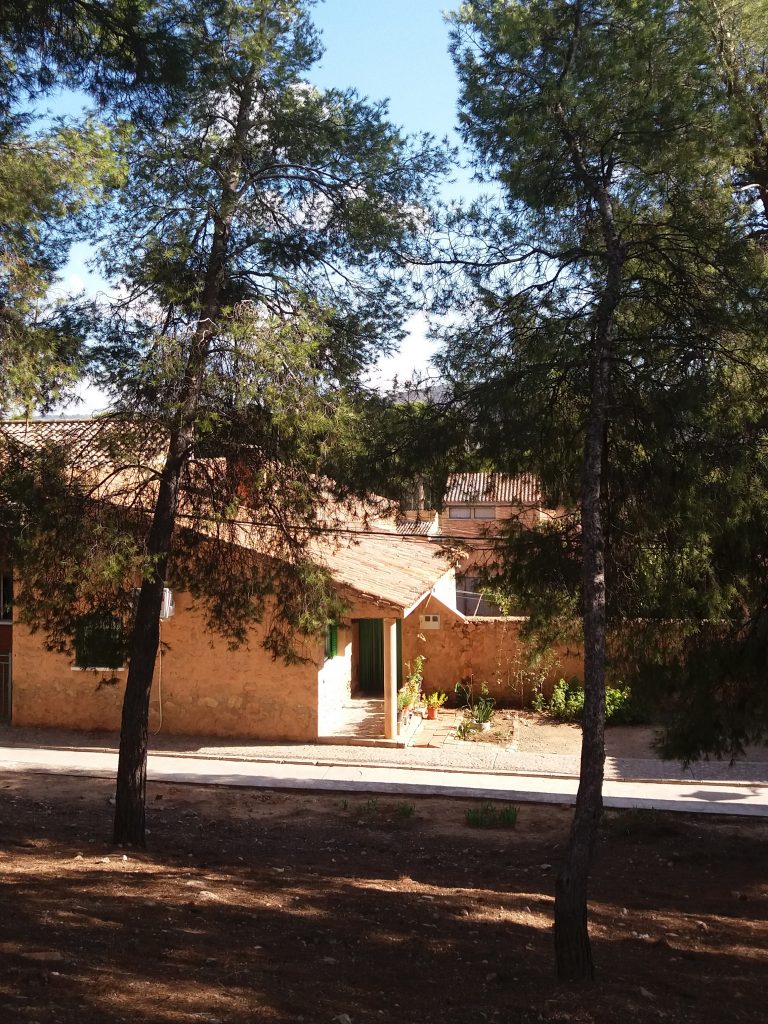
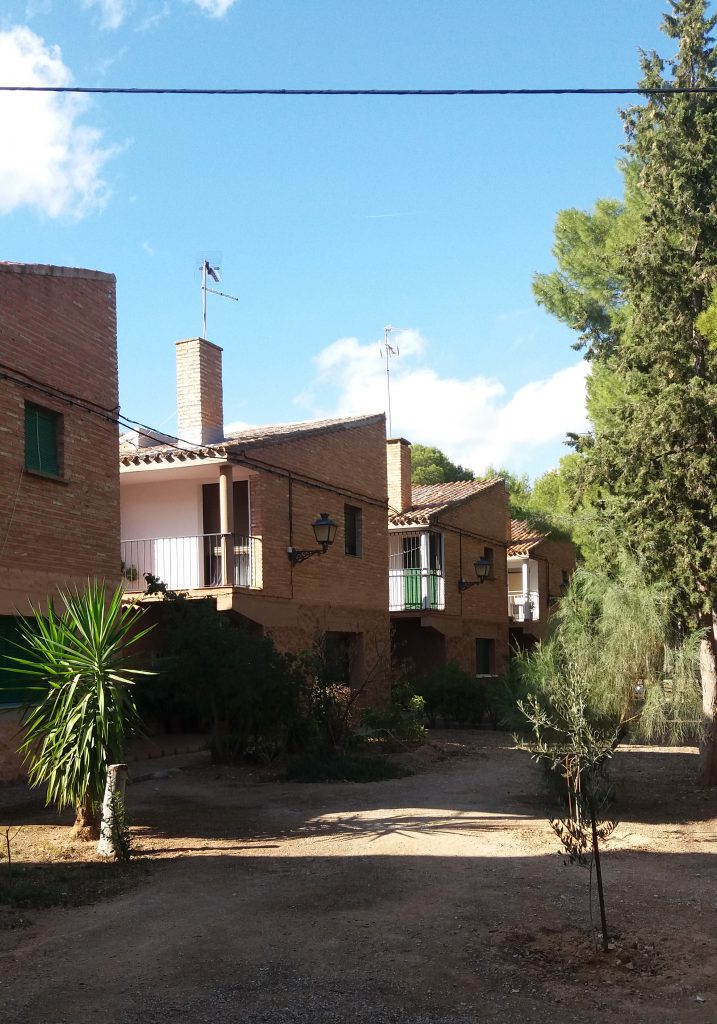
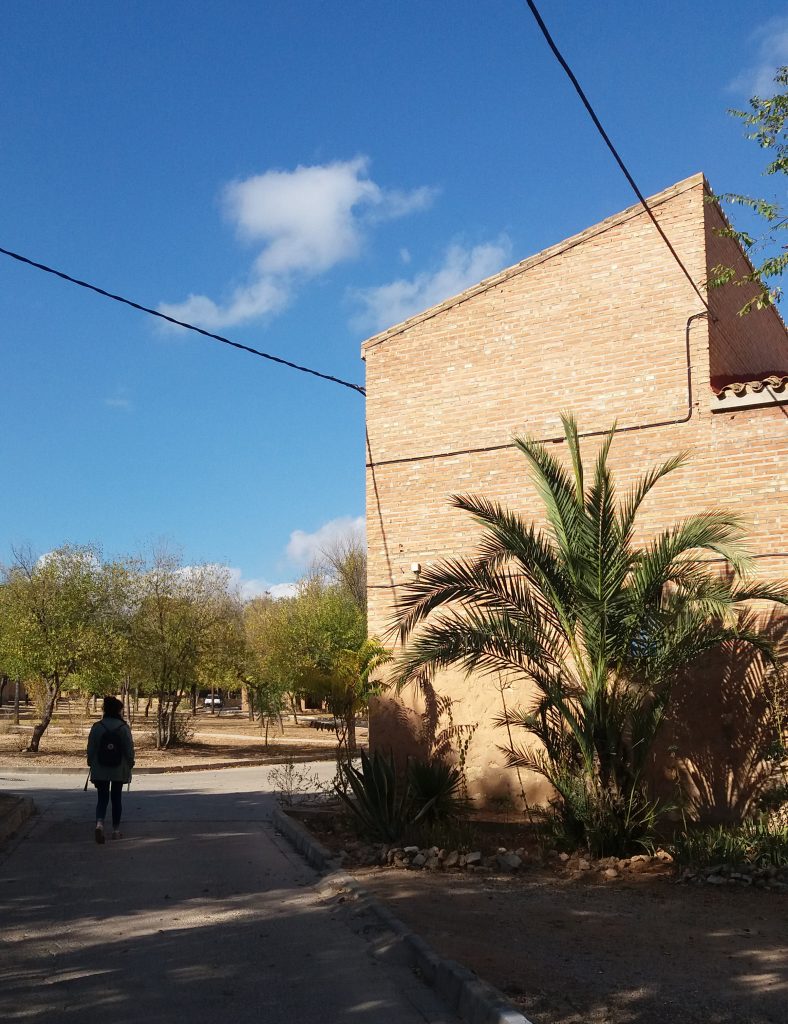
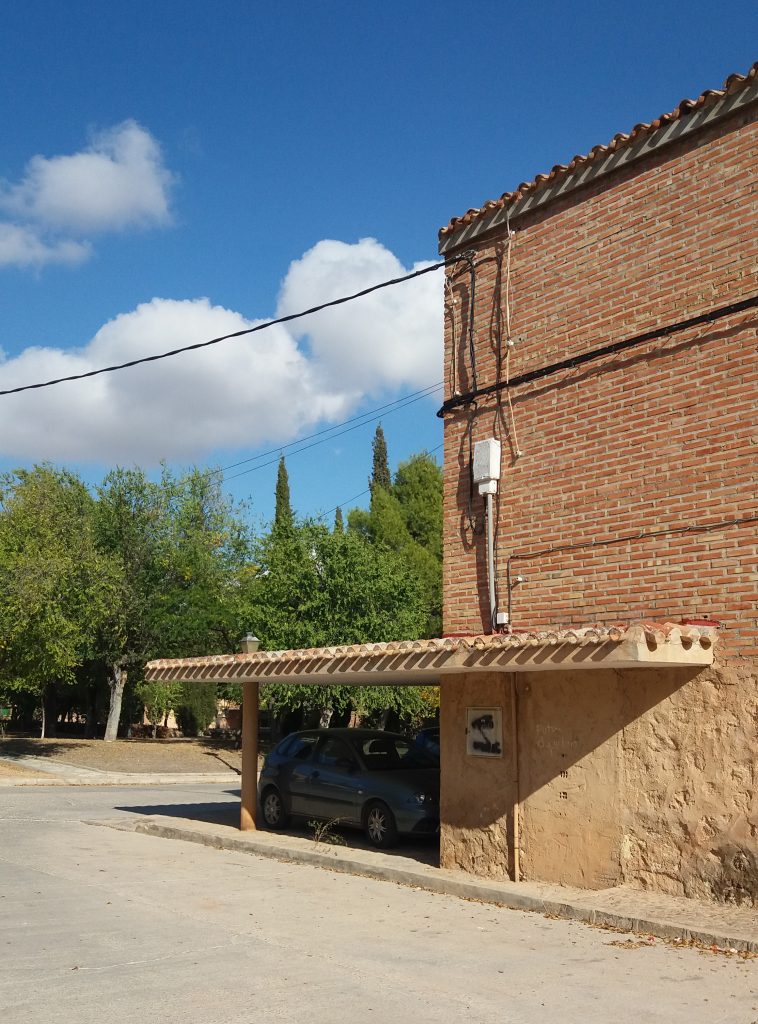
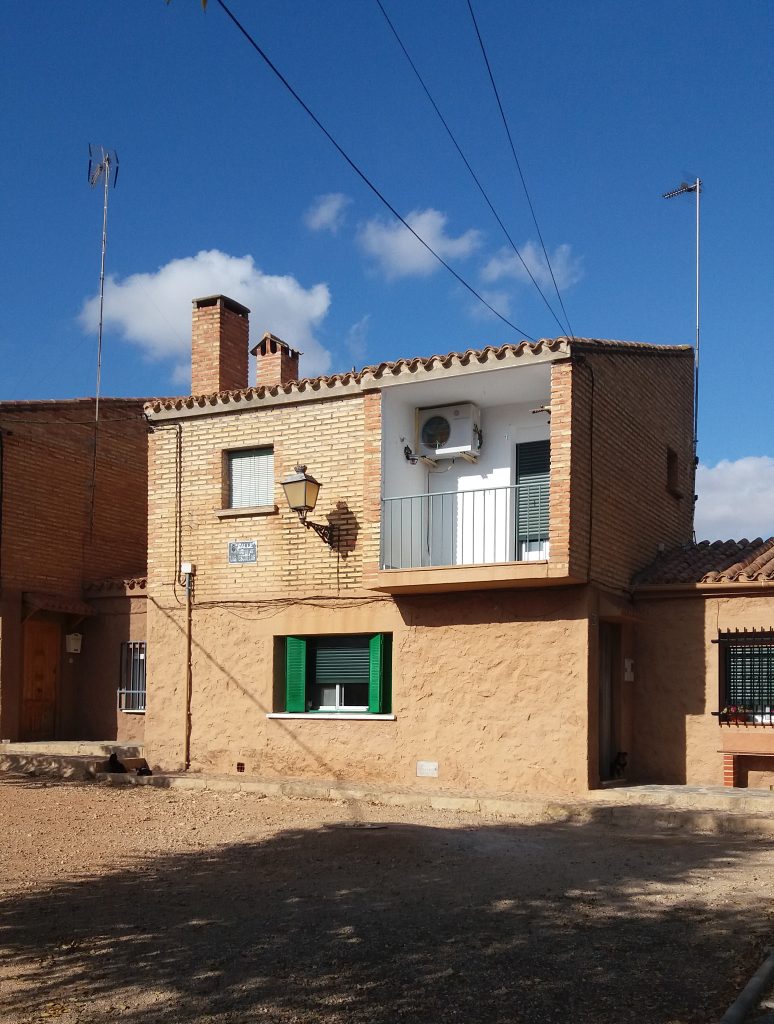
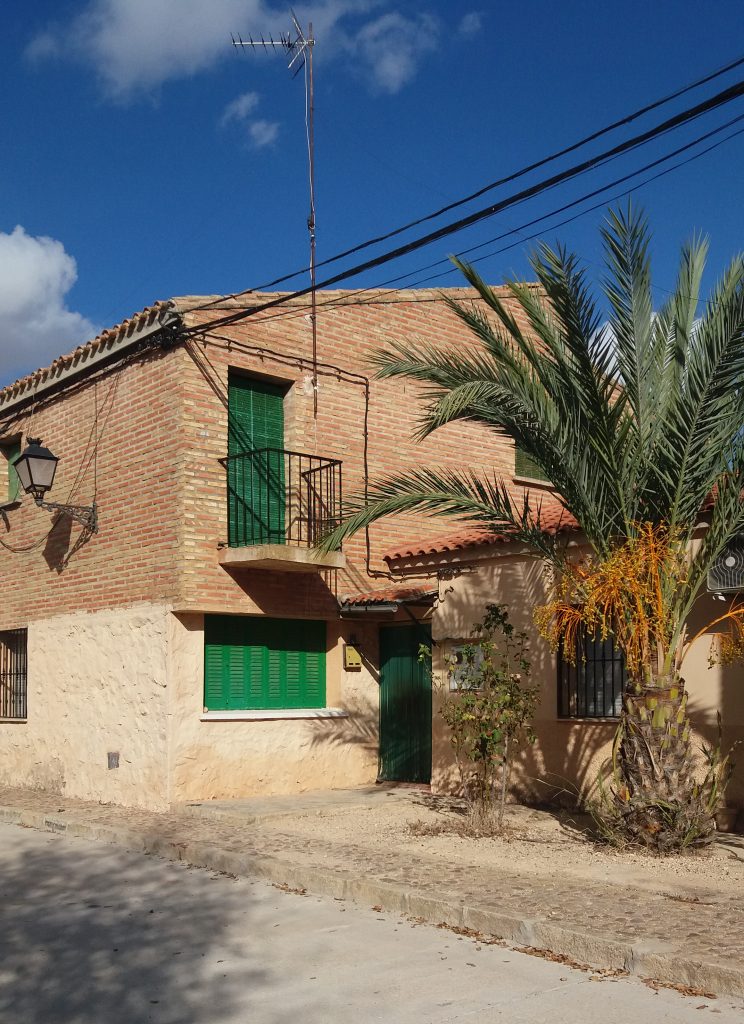
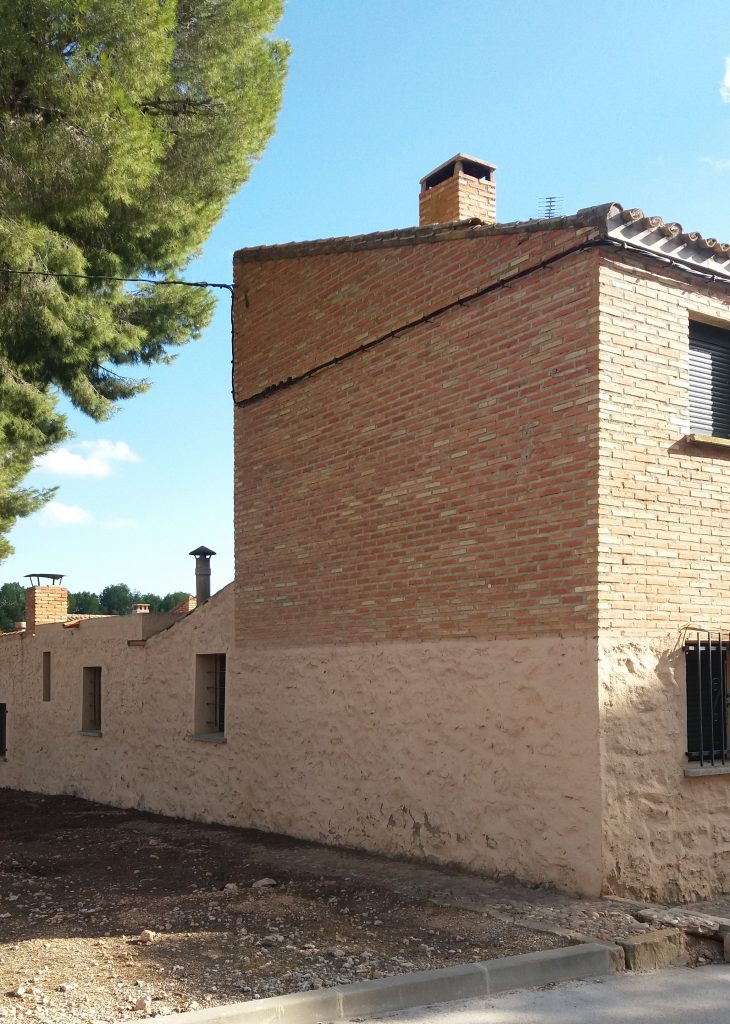
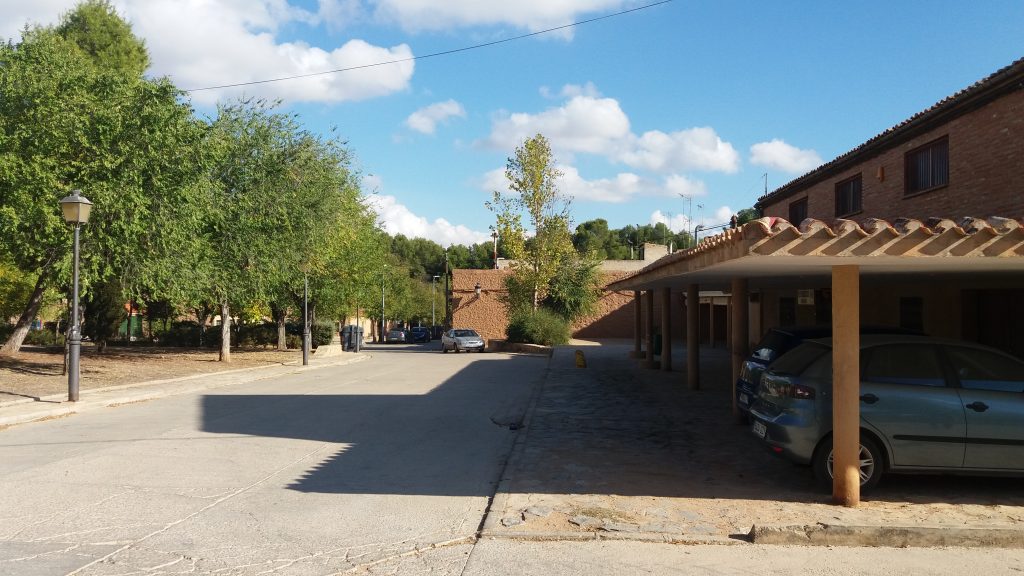
VII
Geraniums, carnations, petunias. Some rose bushes next to that wall, also covered with the leaves of a vine that greets La Mancha from inside a courtyard. The path up the hill gets steeper at times as we head towards the village church. Architecture, they say, began down there. Precisely at the point where one became aware of the effort of ascending, the instant when the legs are loaded and the breath, now, begins to shorten. Architecture as distance covered in time. The balconies, in a row, cast shadows on the doors, some in need of a coat of paint, which, like a cluster, descend the hillside. A bouquet of lavender retains its faded colour tied to the railing of one of them. The last stretch takes us up to a stepped plinth, in the same way as we reached the open portico of the Plaza Mayor. An intermediate stop offers a partial panoramic view of the roofs of the village. The different orientations of the Arabic tile roofs construct a picturesque, almost casual image, emulating with their play of light and waves a progressive organic growth typical of the slow and gradual colonisation of a territory. It is just an image. In our memory survive those original photos we saw before arriving here, in which these same dwellings were erected at the same time on a bitter and bare land. With the passing of the years, the treetops play at hiding a village under their shade, a shade that generously welcomes us up here. Cañada de Agra could be explained as the transition experienced from a space defined by a shadow to another of similar characteristics. As a settlement built to provide the necessary shade for its inhabitants. The entrance portico to the church has a depth that completely distorts the scale of the threshold. Its clear height is disturbingly oppressive. On the wall of the nave, arranged with extreme simplicity, two carefully decorated doors invite us to retreat into the deepest and coolest shade of the village.
A group of neighbours greet us as we pass. Summer, they say, is coming dry.
Geranios, claveles, petunias. Unos rosales junto a aquella pared, tapizada también por las hojas de una parra que desde el interior de un patio saluda a La Mancha. El camino de subida se empina por momentos cuando nos dirigimos a la iglesia del pueblo. La arquitectura, dicen, empezó allí abajo. Precisamente en el punto en que uno fue consciente del esfuerzo de ascender, el instante en que las piernas se cargan y la respiración, ahora, empieza a cortarse. La arquitectura como distancia recorrida en el tiempo. Los balcones, en hilera, arrojan sombra sobre las puertas, alguna necesitada de una mano de pintura, que como un racimo descienden ladera abajo. Un ramo de espliego conserva su color ya algo marchito atado a la barandilla de uno de ellos. El último tramo nos eleva a un plinto escalonado, del mismo modo en que accedimos al pórtico abierto de la Plaza Mayor. Una parada intermedia ofrece una panorámica parcial de los tejados del pueblo. Las distintas orientaciones de los faldones de teja árabe construyen una imagen pintoresca, casi casual, emulando con sus juegos de luces y ondas un progresivo crecimiento orgánico propio de la colonización lenta y pautada de un territorio. Es solo una imagen. En nuestra memoria perviven aquellas fotos originales que vimos antes de llegar aquí, en las que estas mismas viviendas se levantaron a la vez sobre una tierra amarga y desnuda. Pasados los años, las copas de los árboles juegan a esconder un pueblo bajo su sombra, sombra que nos acoge generosa aquí arriba. Se podría explicar Cañada de Agra como la transición experimentada desde un espacio definido por una sombra a otro de similares características. Como un asentamiento construido para procurar esa sombra necesaria a sus habitantes. El pórtico de acceso a la iglesia tiene una profundidad que distorsiona por completo la escala del umbral. Su altura libre es inquietantemente opresiva. Sobre el muro de la nave, dispuestas con extrema sencillez, dos puertas decoradas con esmero nos invitan a recogernos en la sombra más profunda y fresca del pueblo.
Un grupo de vecinos nos saluda al pasar. El verano, dicen, viene seco.
